When people imagine Kenya, the image that comes to mind is often the safari. Lions on the savanna, elephants crossing red-dusted plains, giraffes stretching into acacia trees. There is something almost mythic about the idea. And yet, nothing compares to the reality of being there—of spending a day or several days in the expanse of a national park, scanning the horizon for movement, watching the play of light on the red earth, waiting for the moment when an animal appears. A safari in Tsavo East National Park is one of the highlights of Kenya, and an experience that shapes not just a trip, but the memory of a lifetime.
We did a 3-day safari that included pickup from Diani Beach, and a friend of ours from Skippers arranged it with a local operator she met. In terms of booking a safari, we recommend that you get recommendations from the Skippers Coliving crew if you're staying there. Otherwise, if you're in Diani for a limited time and want to arrange something beforehand, this safari is quite similar to the one we did and includes a stay at the same lovely lodge we were at.
The landscape of Tsavo East
Tsavo East is one of the oldest and largest national parks in Kenya, covering more than 13,000 square kilometers.
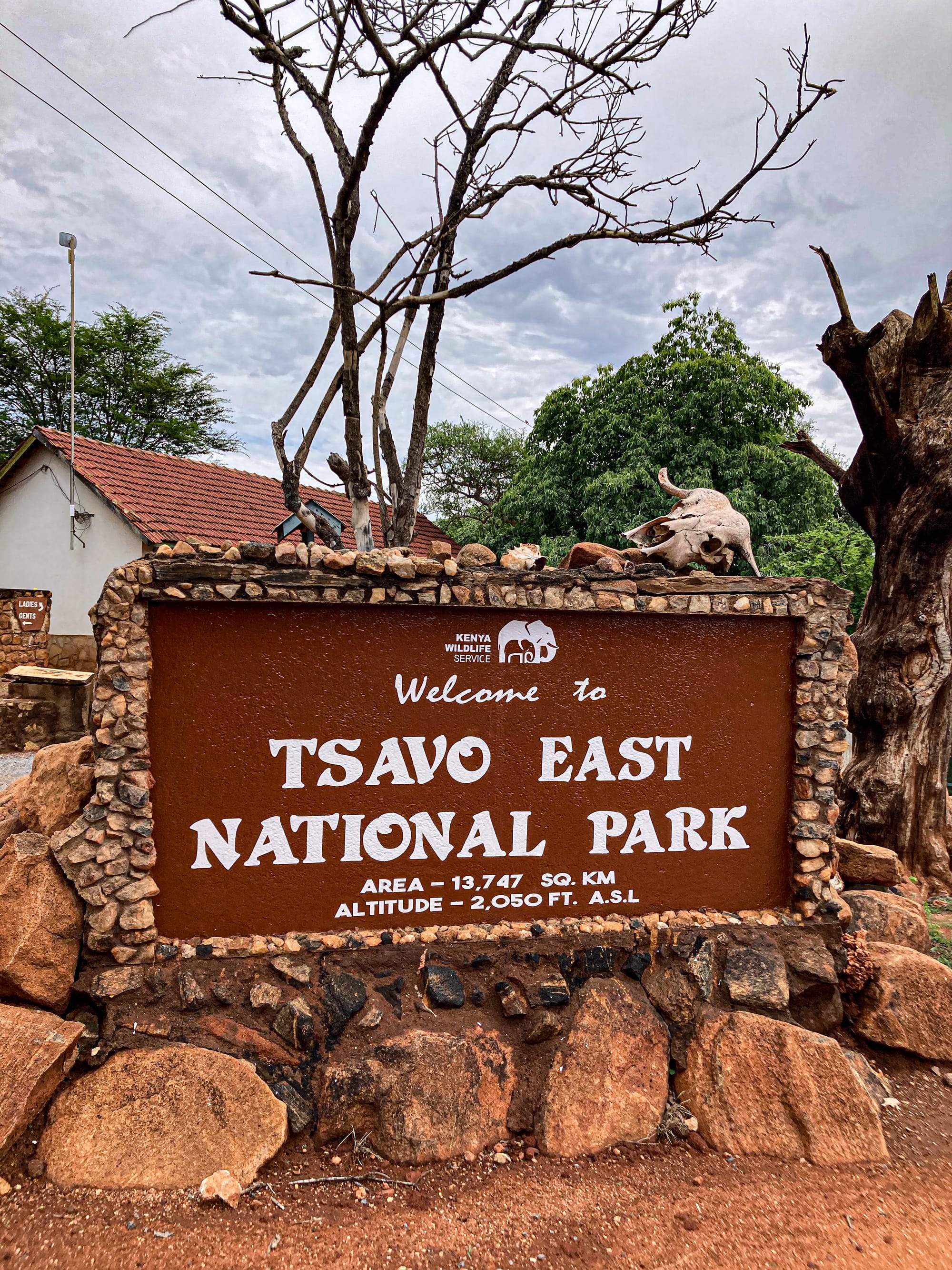
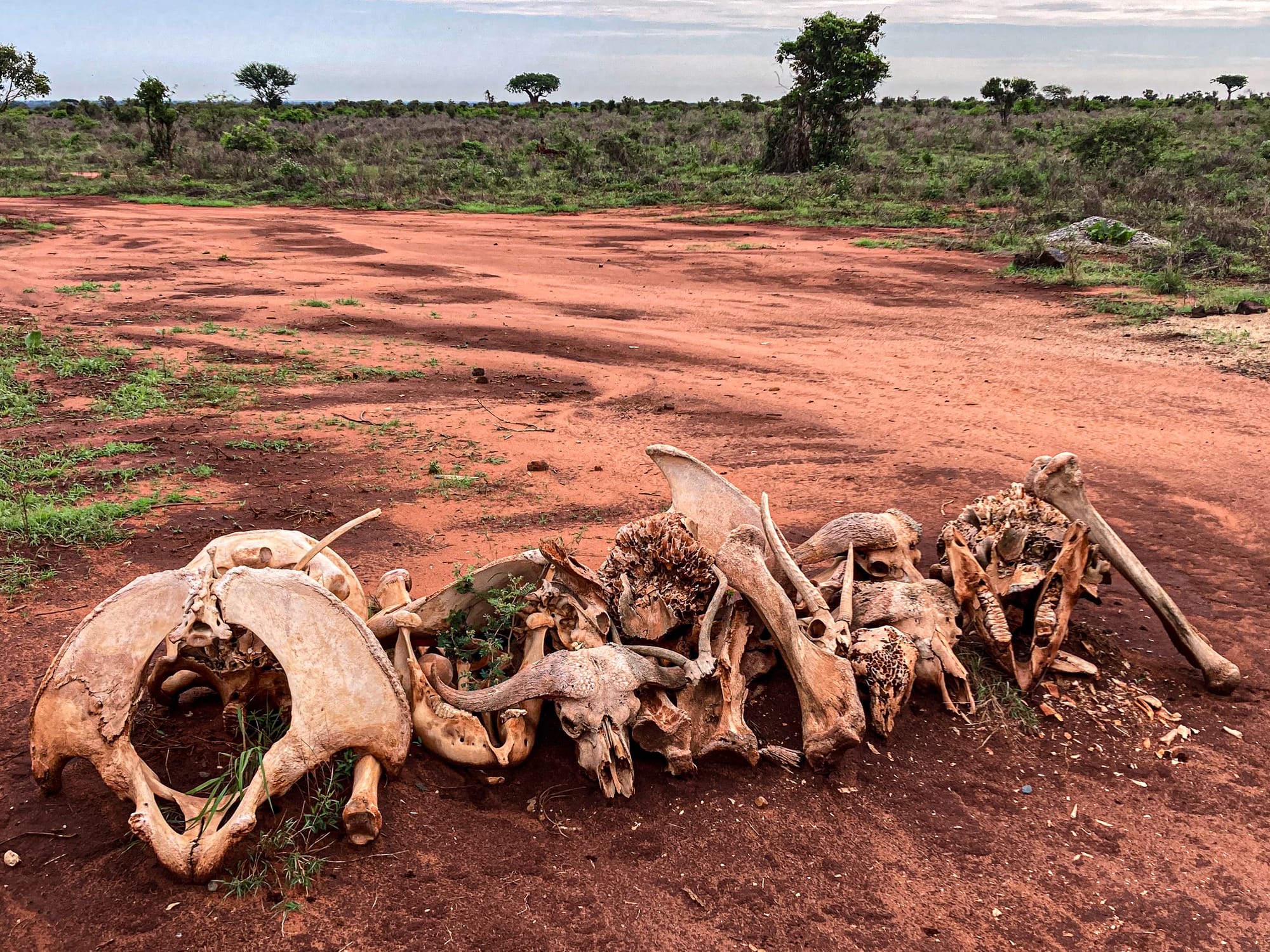
The entrance to Tsavo East National Park and a striking reminder of the savanna’s cycle of life and death
The first thing you notice is the color of the land itself: a deep, burnt red soil that contrasts sharply with the greenery of the trees and the blue of the sky. Driving into the park feels like entering another world, one both harsh and alive.
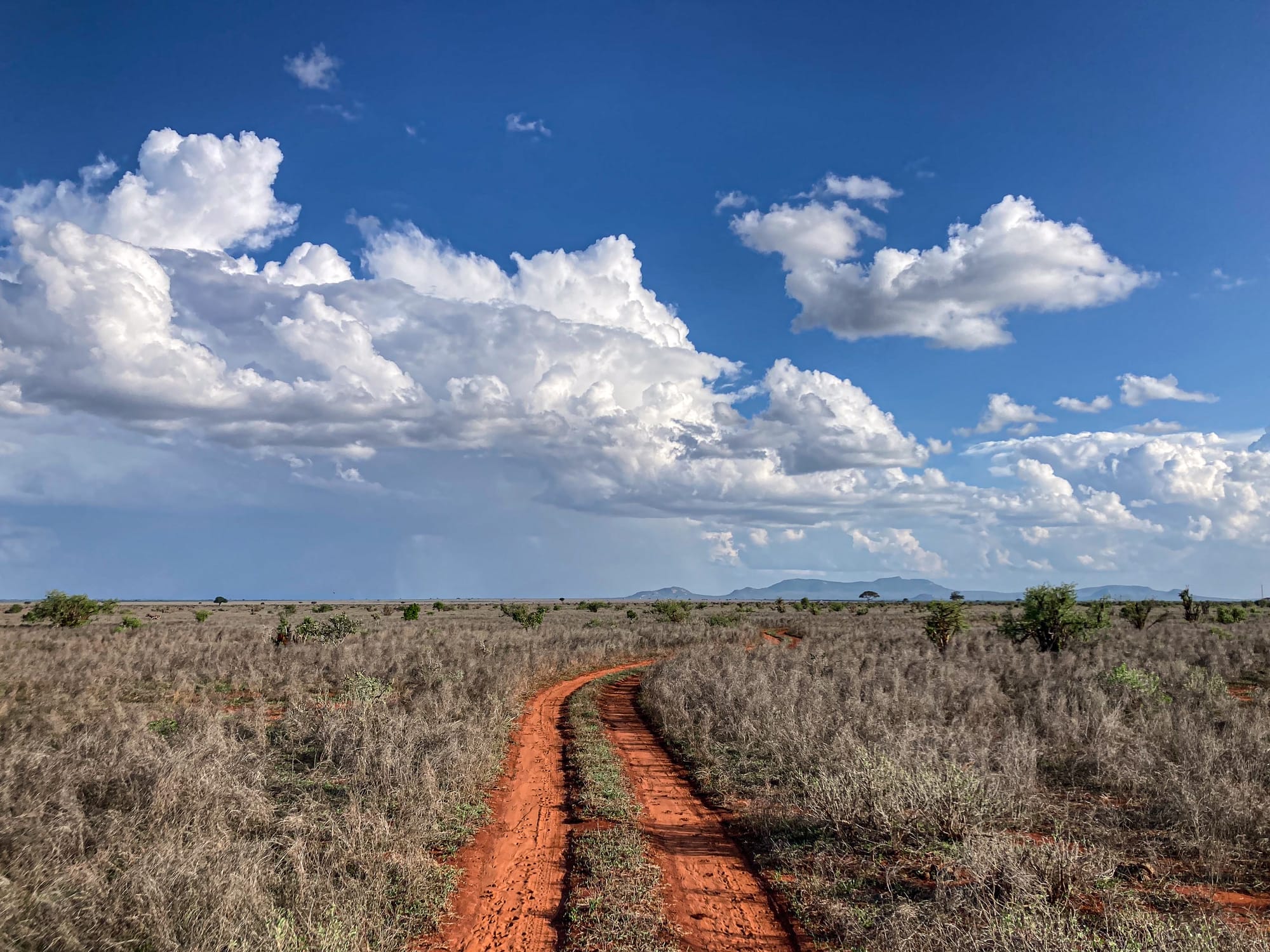
The earth is scorched and dry, but life flourishes here. Zebras graze along the roadside, giraffes move gracefully among the thorny branches, elephants appear like shadows across the horizon.
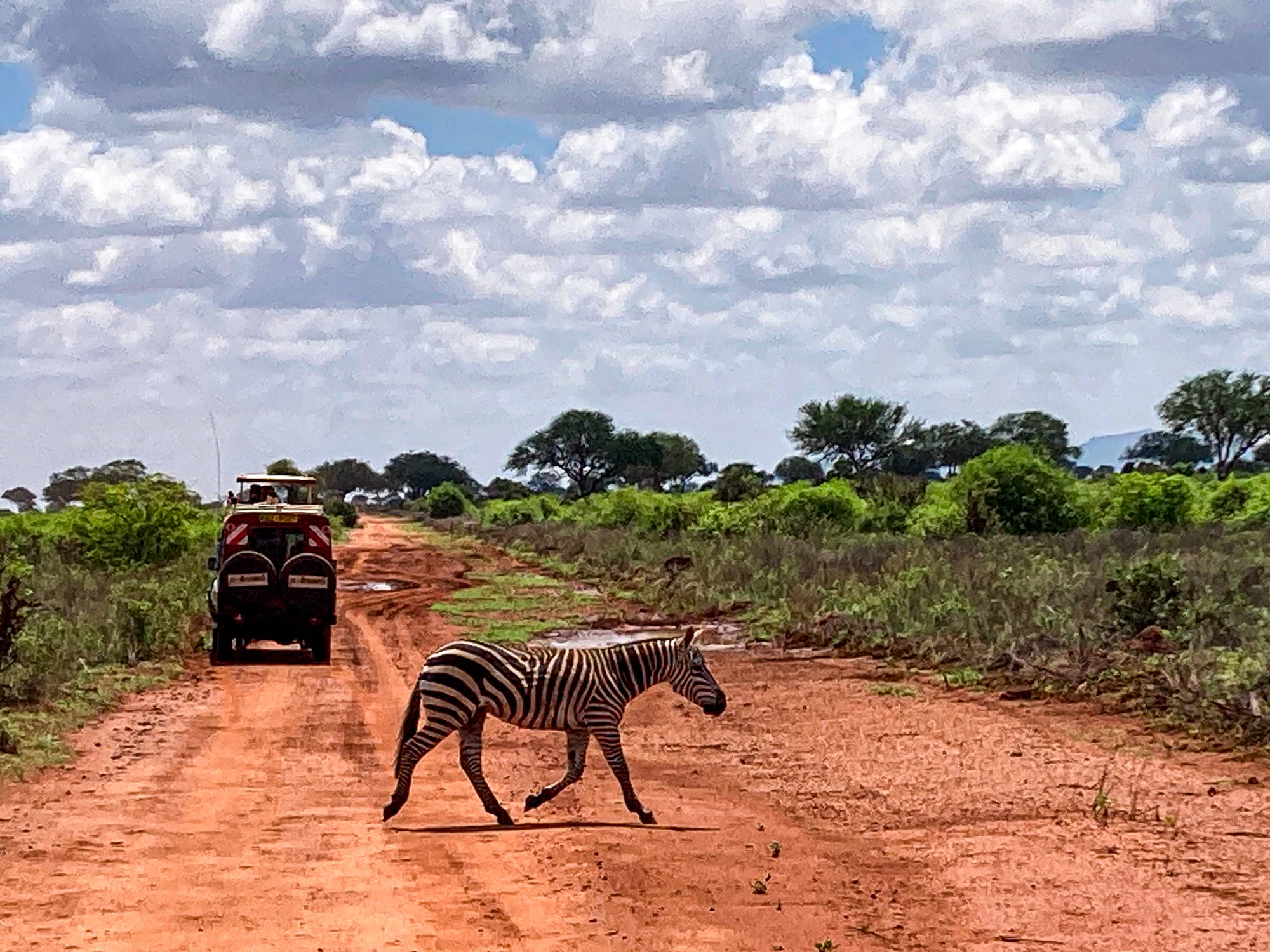
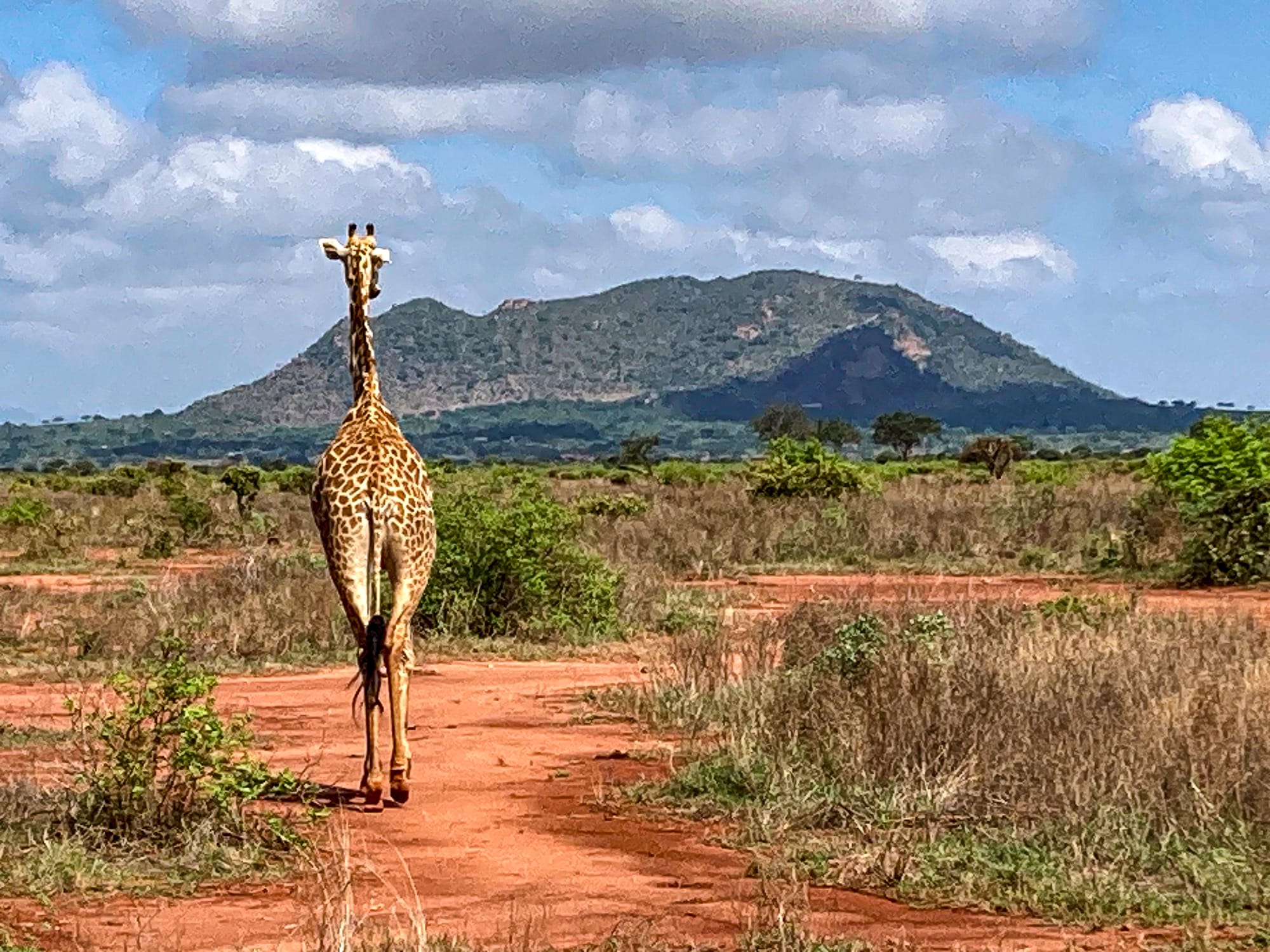
Moments on the red earth of Tsavo East
The park is vast, and it can take hours to traverse even small portions of it. This is part of the experience: long stretches of road where your only task is to look, to listen, and to wait. The landscapes shift between open plains, riverine forests, and rocky outcrops.
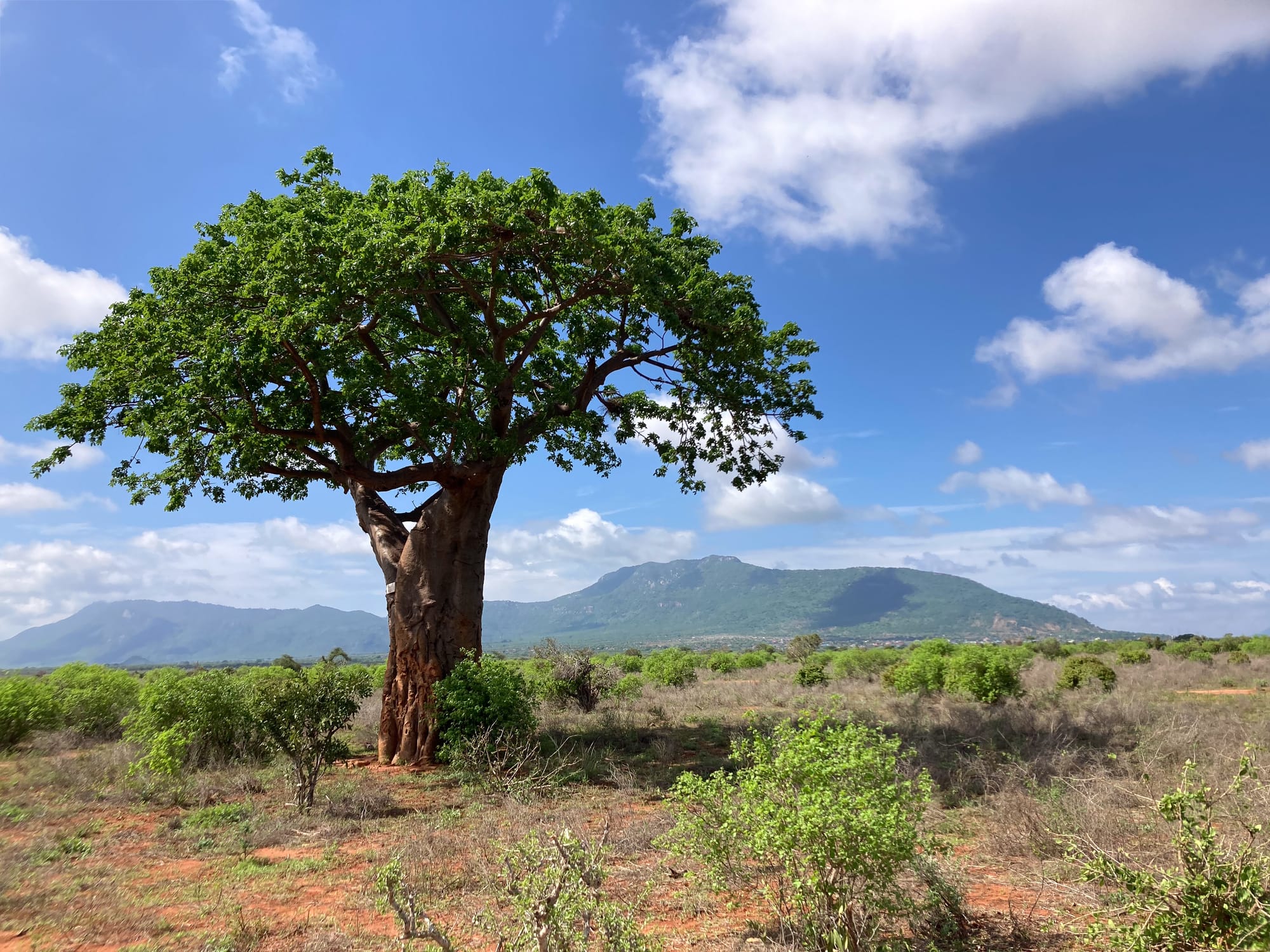
Sometimes the beauty is in the animals, and sometimes it is simply in the land itself, stark and endless under a wide Kenyan sky.
The rhythm of the safari
A safari in Tsavo East has a rhythm unlike any other kind of travel. The day begins early, often before sunrise, when the animals are most active. You climb into the jeep, the roof pushed open so you can stand and lean out as the vehicle moves slowly along the dirt roads.
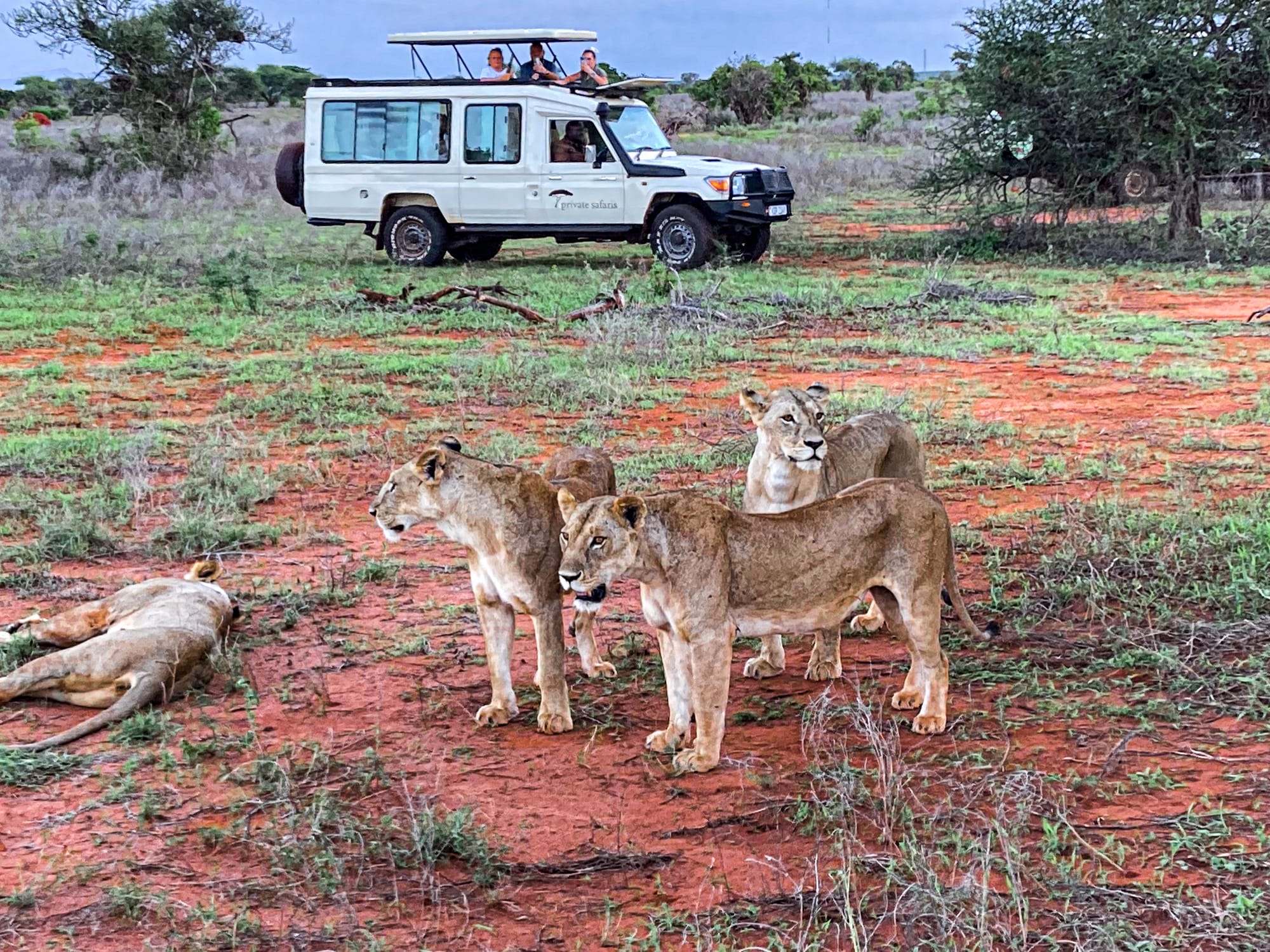
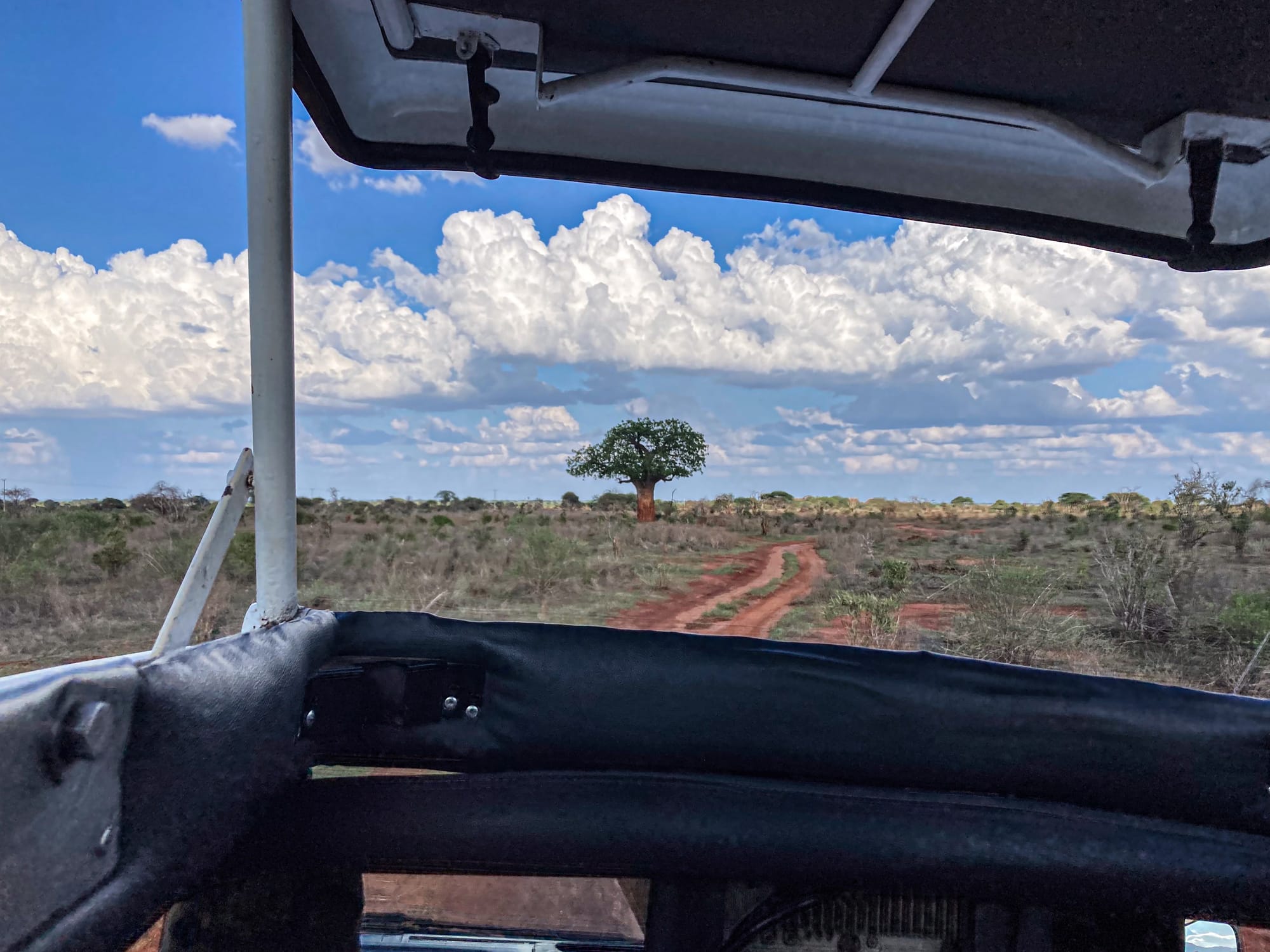
Lionesses resting and roaming on Tsavo East’s red earth, watched from nearby safari jeeps
The air is cool and still, and the light is soft, casting long shadows across the savanna. Every movement catches your eye: a flick of a tail, a bird taking flight, a rustle in the grass.
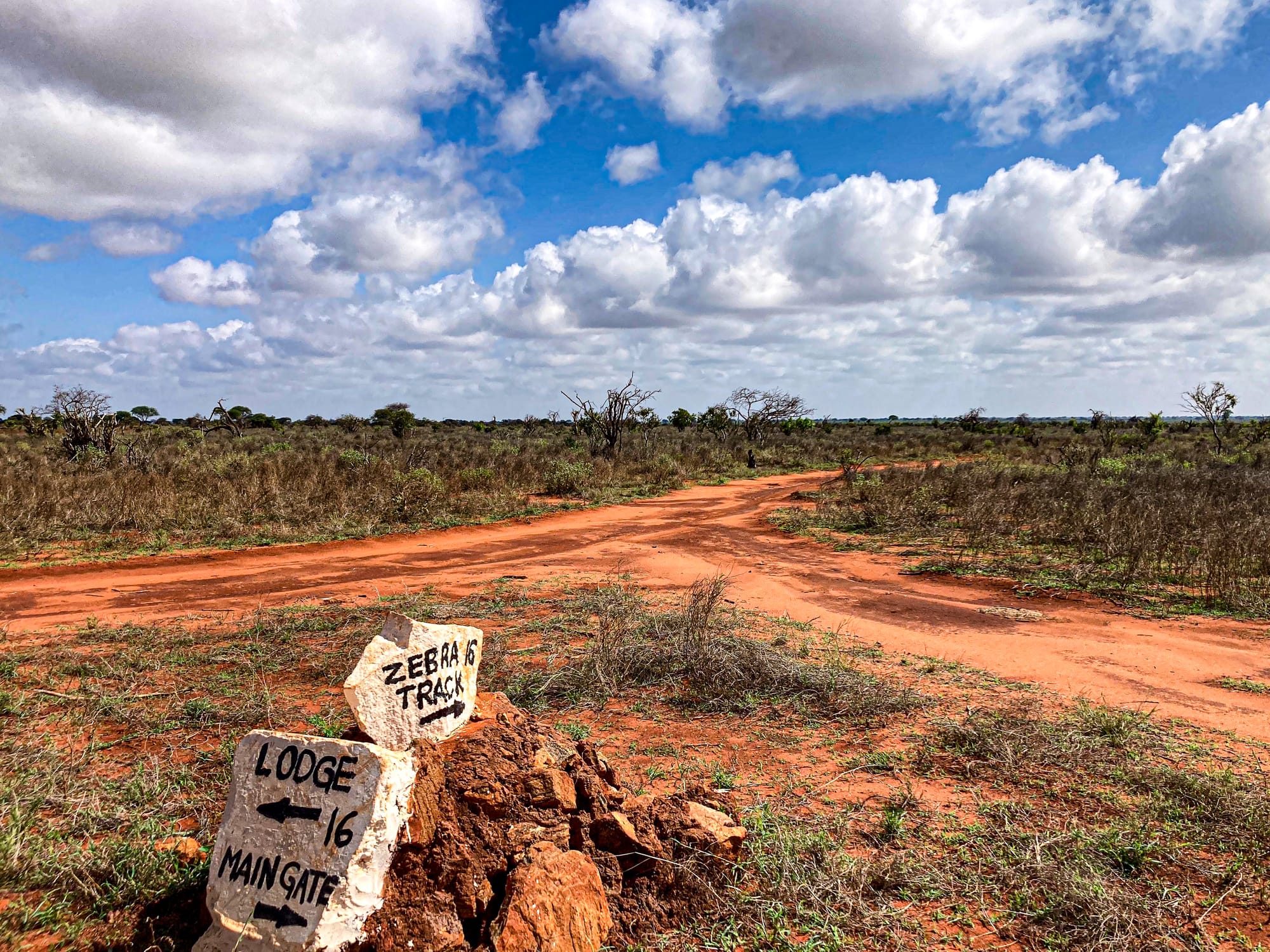
There is only one real objective: to find the animals. It is a kind of focused stillness, a meditative state in motion. You scan the horizon, the treeline, the ground ahead. Sometimes minutes pass with nothing, and sometimes everything happens at once: zebras crossing the road, giraffes feeding nearby, elephants appearing suddenly in the distance.
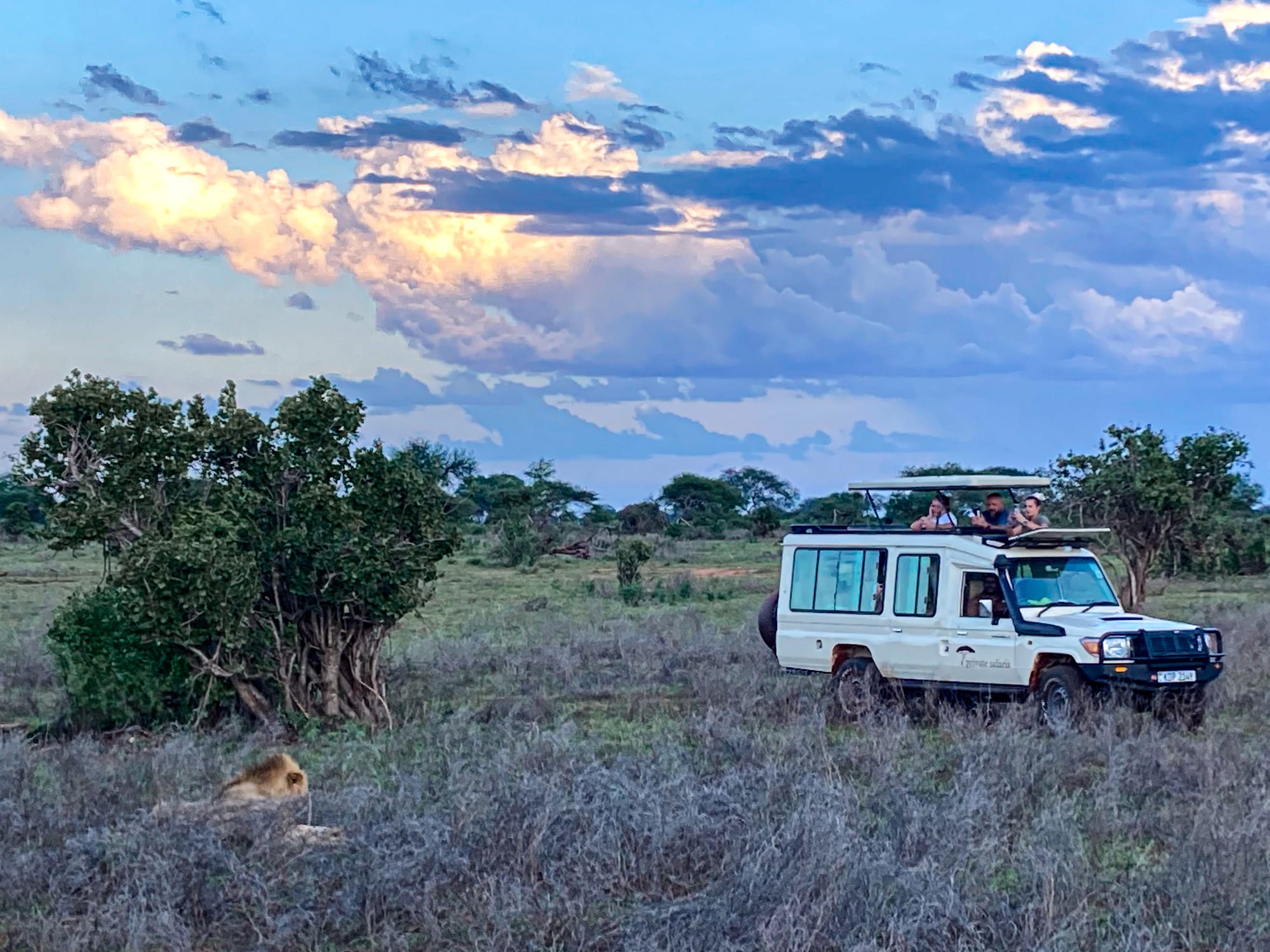
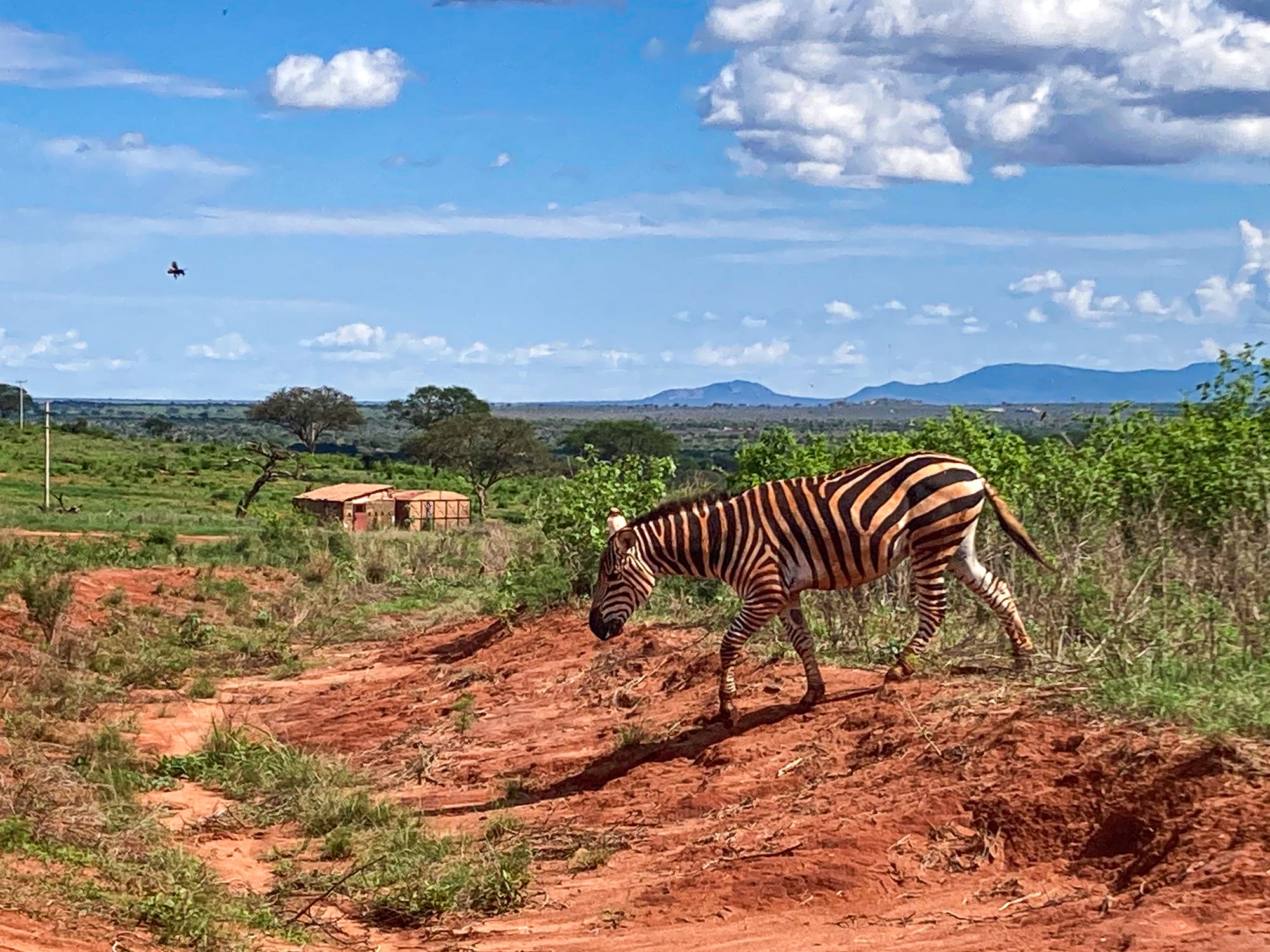
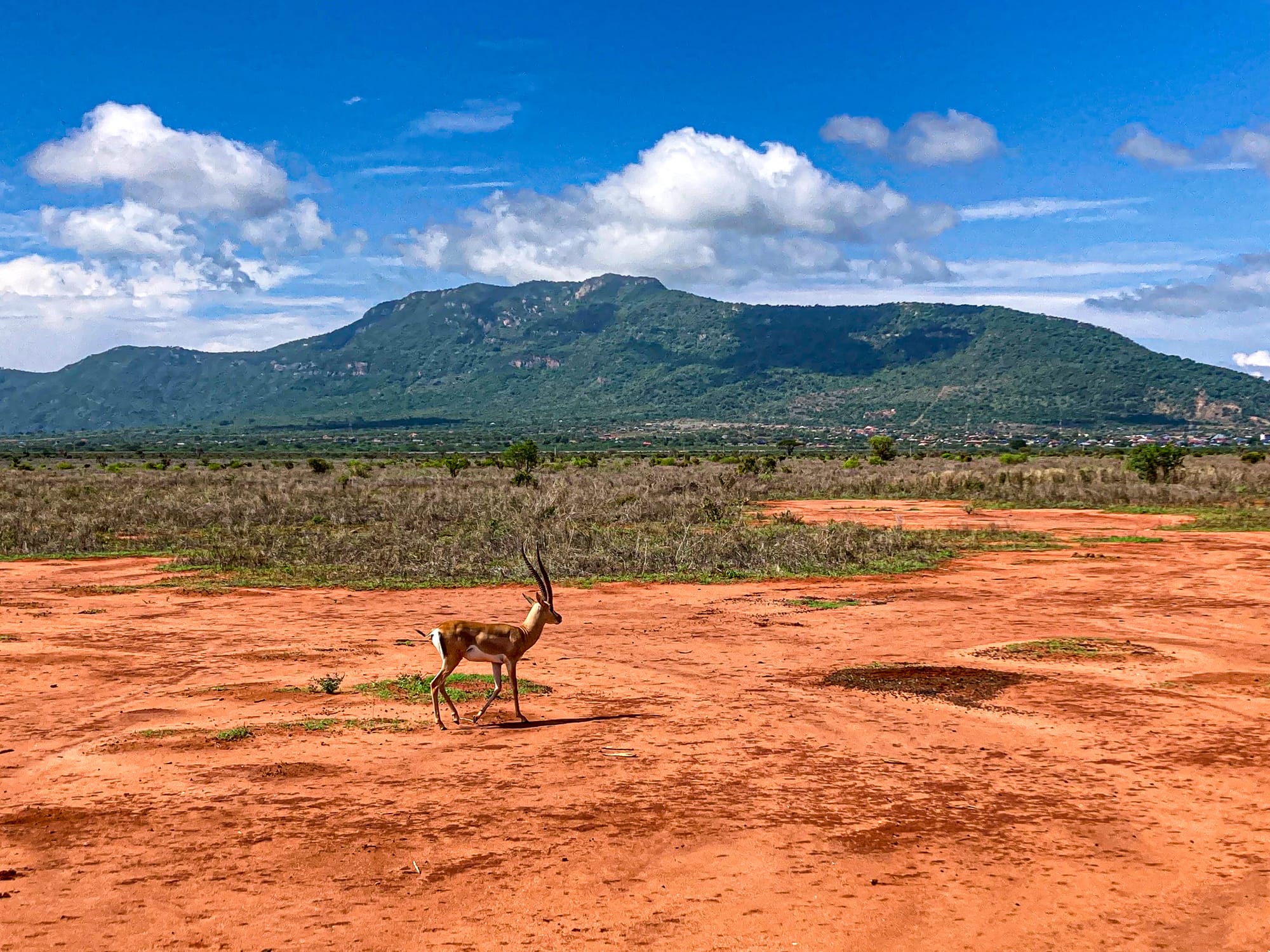
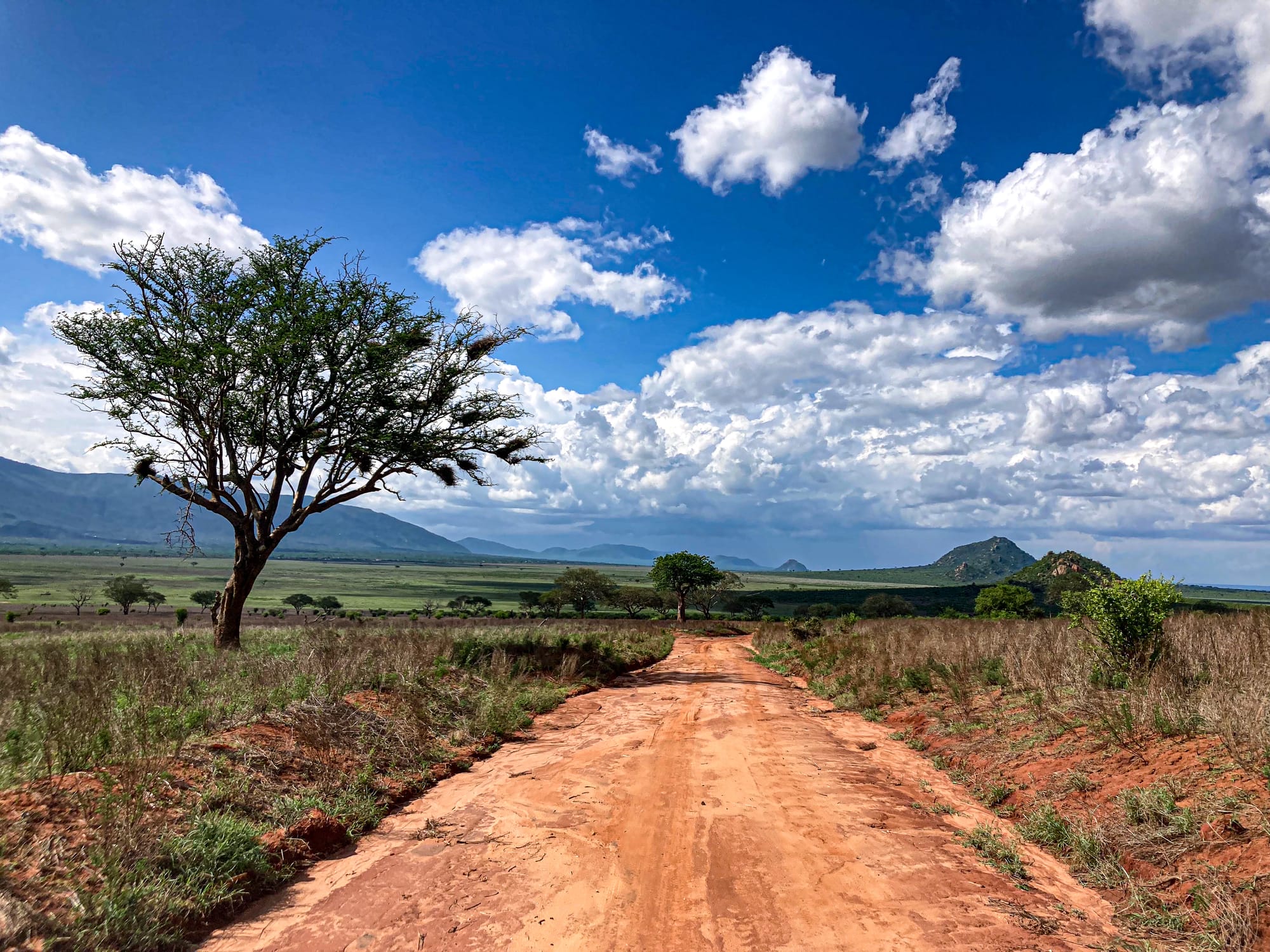
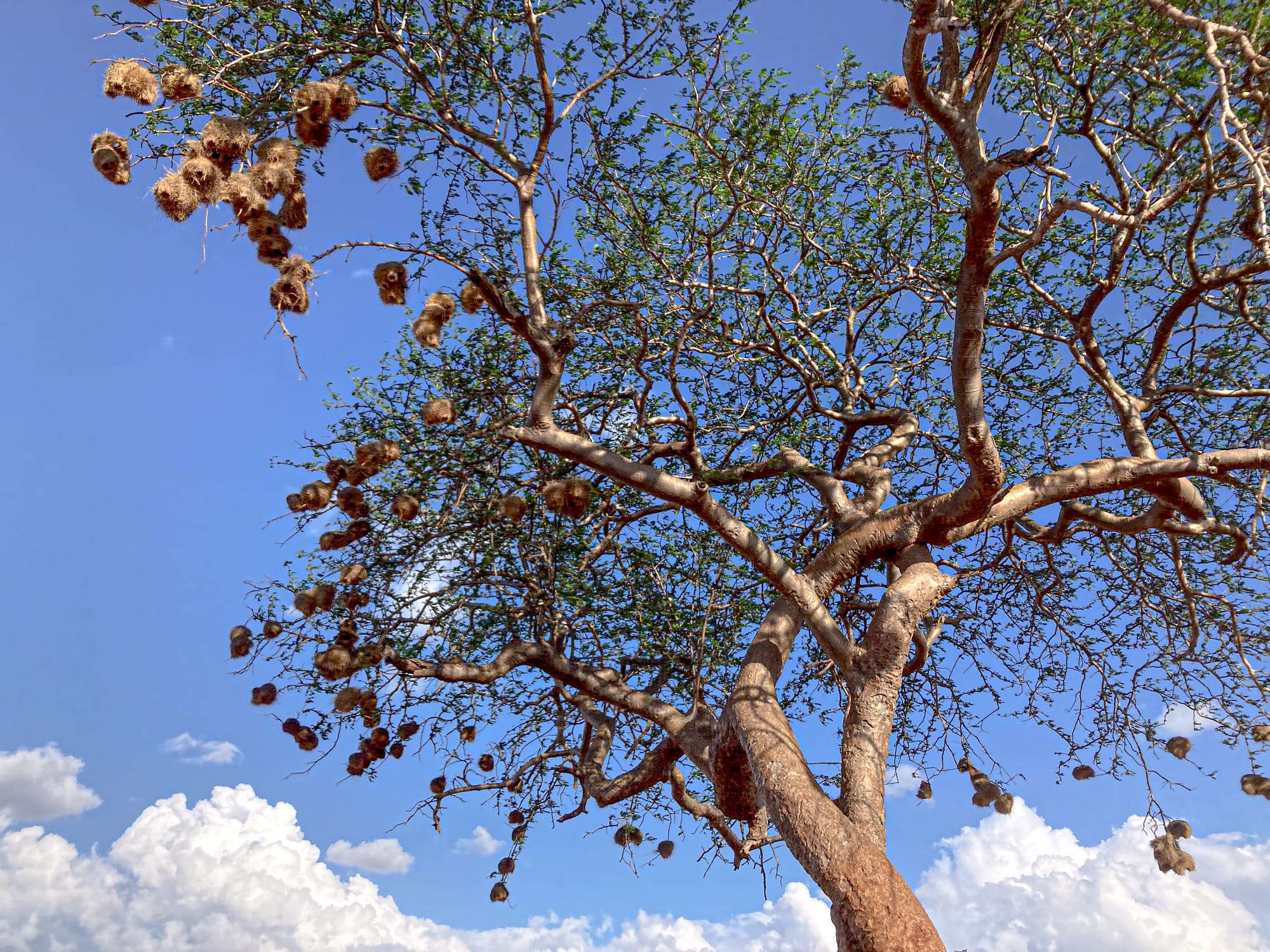
Scenes from Tsavo East
The hours slip by without notice because your attention is wholly absorbed.
The animals we saw
On our safari, the sheer variety of wildlife was overwhelming.
Lions lay sprawled in the shade, their golden coats blending with the dust around them.
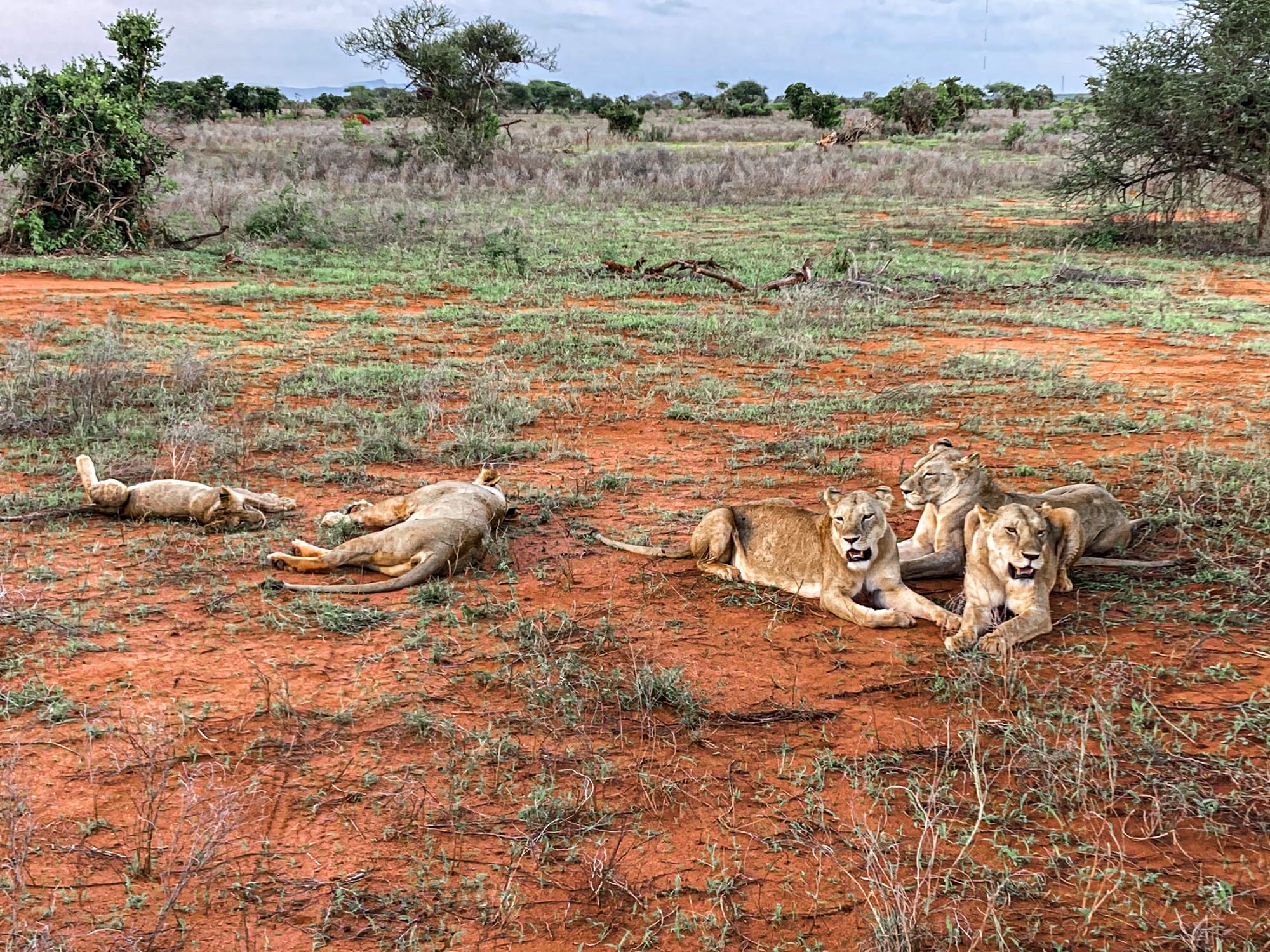
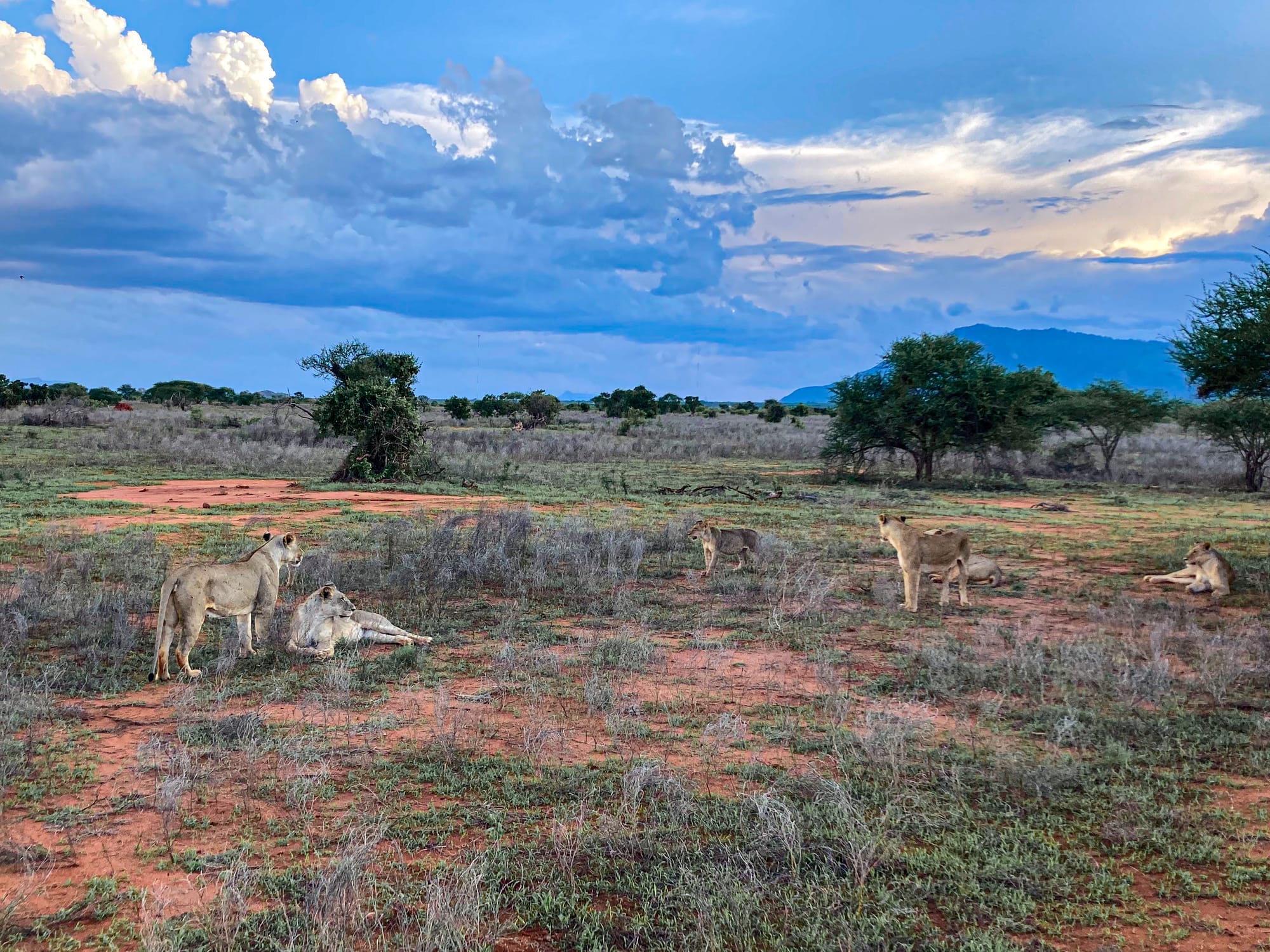
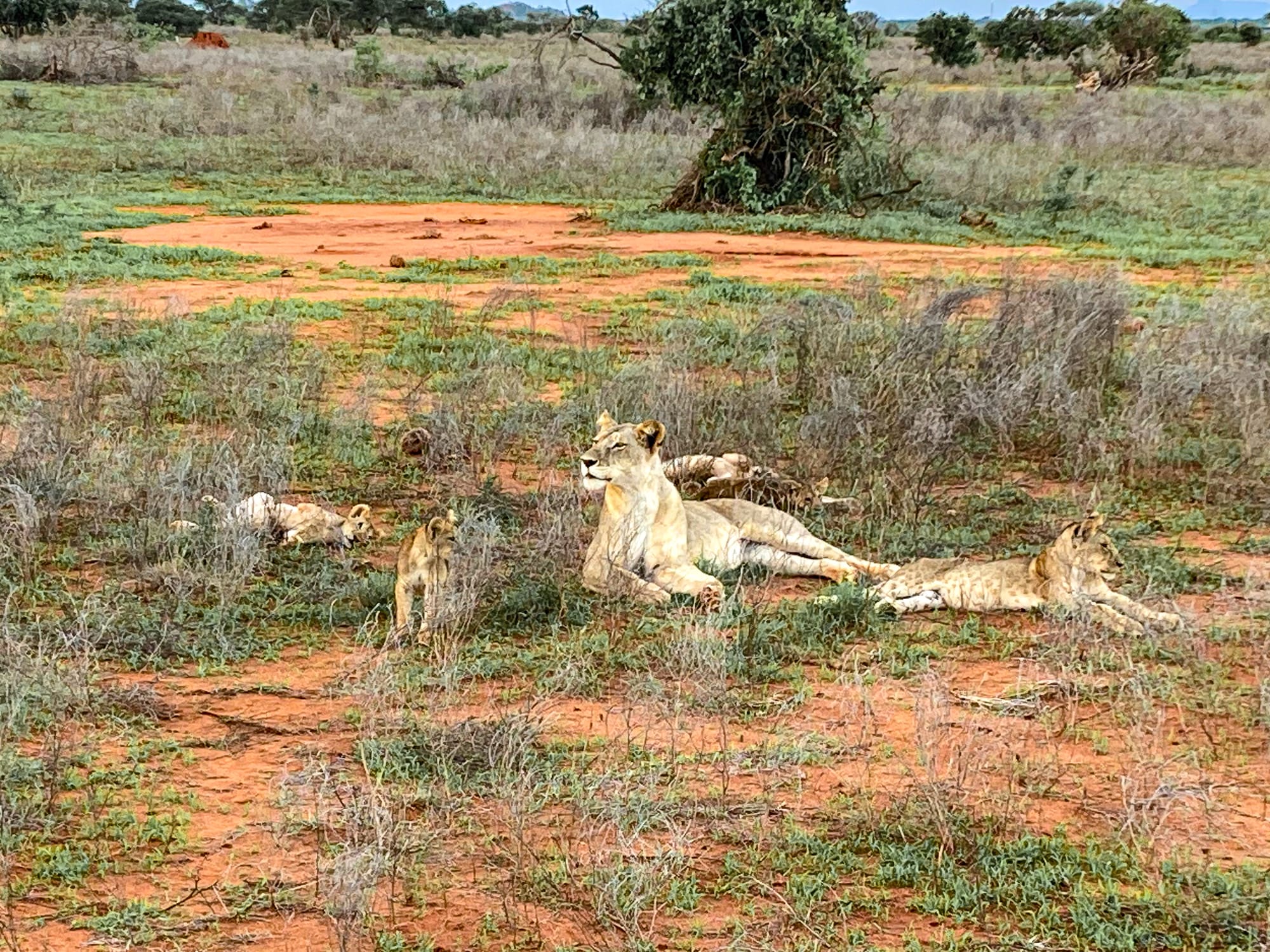
A pride of lions sprawled across Tsavo East’s red earth
Giraffes moved with impossible elegance, bending to nibble at shrubs and then stretching upward again.
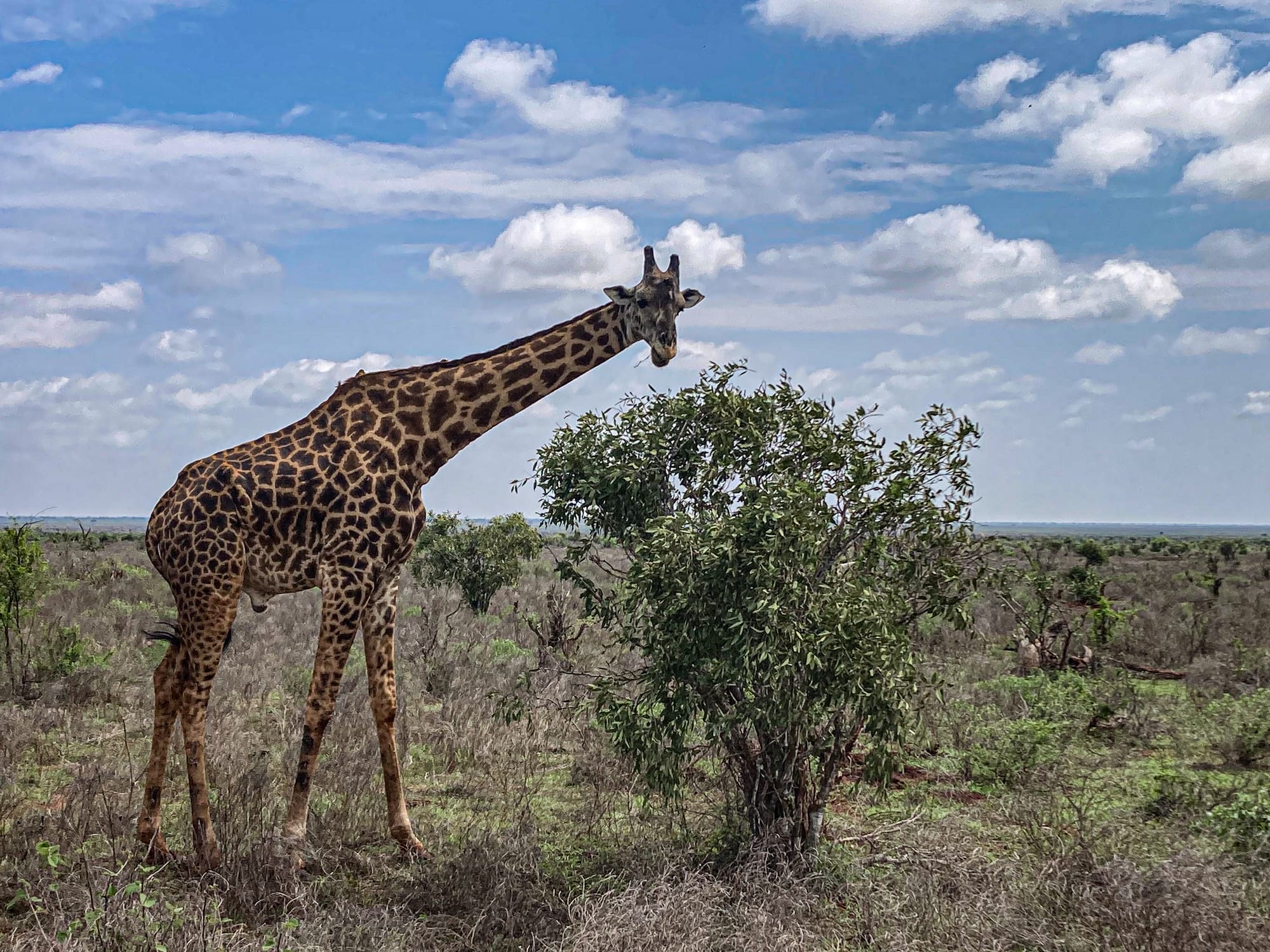
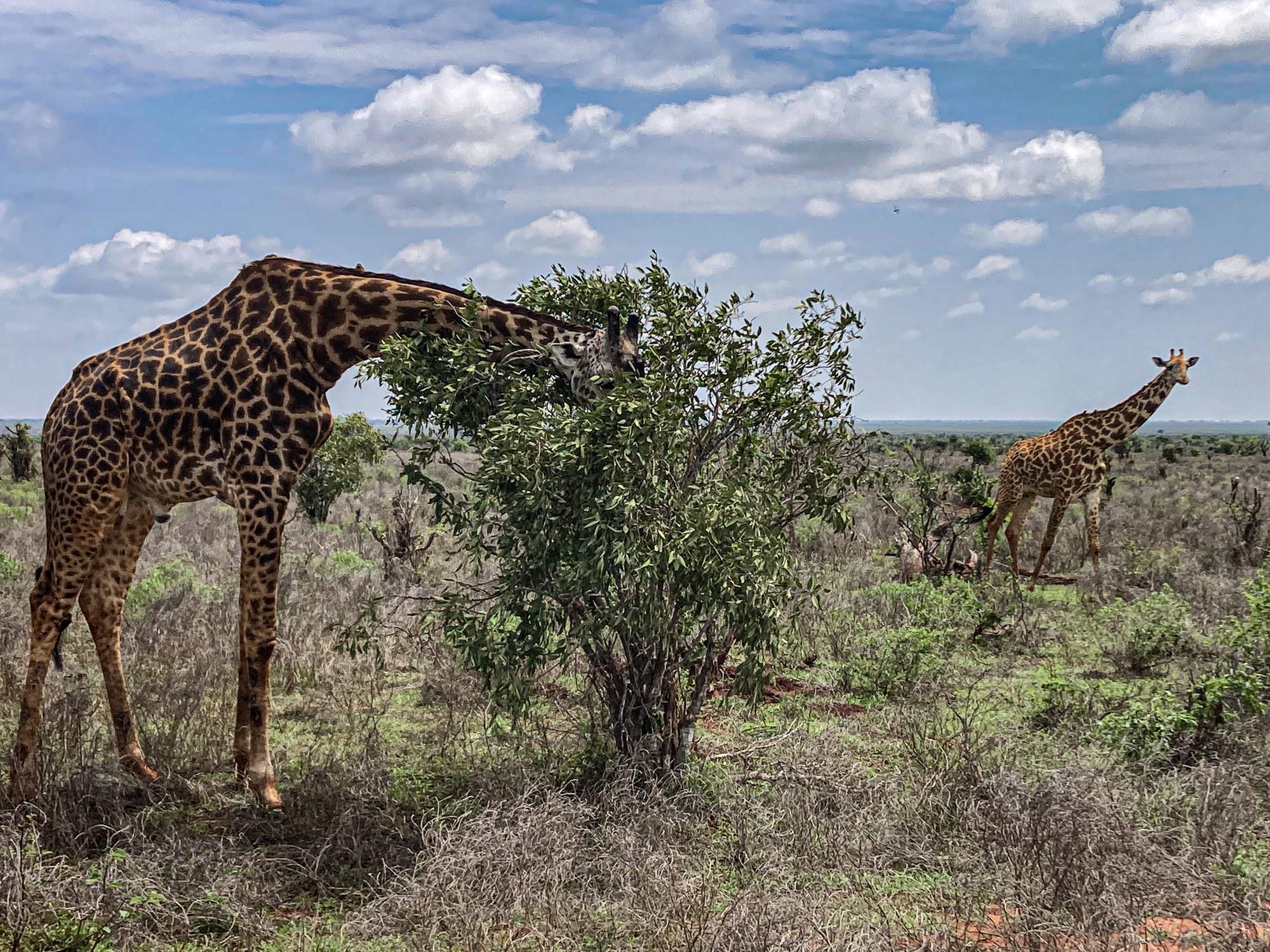
Zebras stood in groups, their stripes vivid against the red soil.
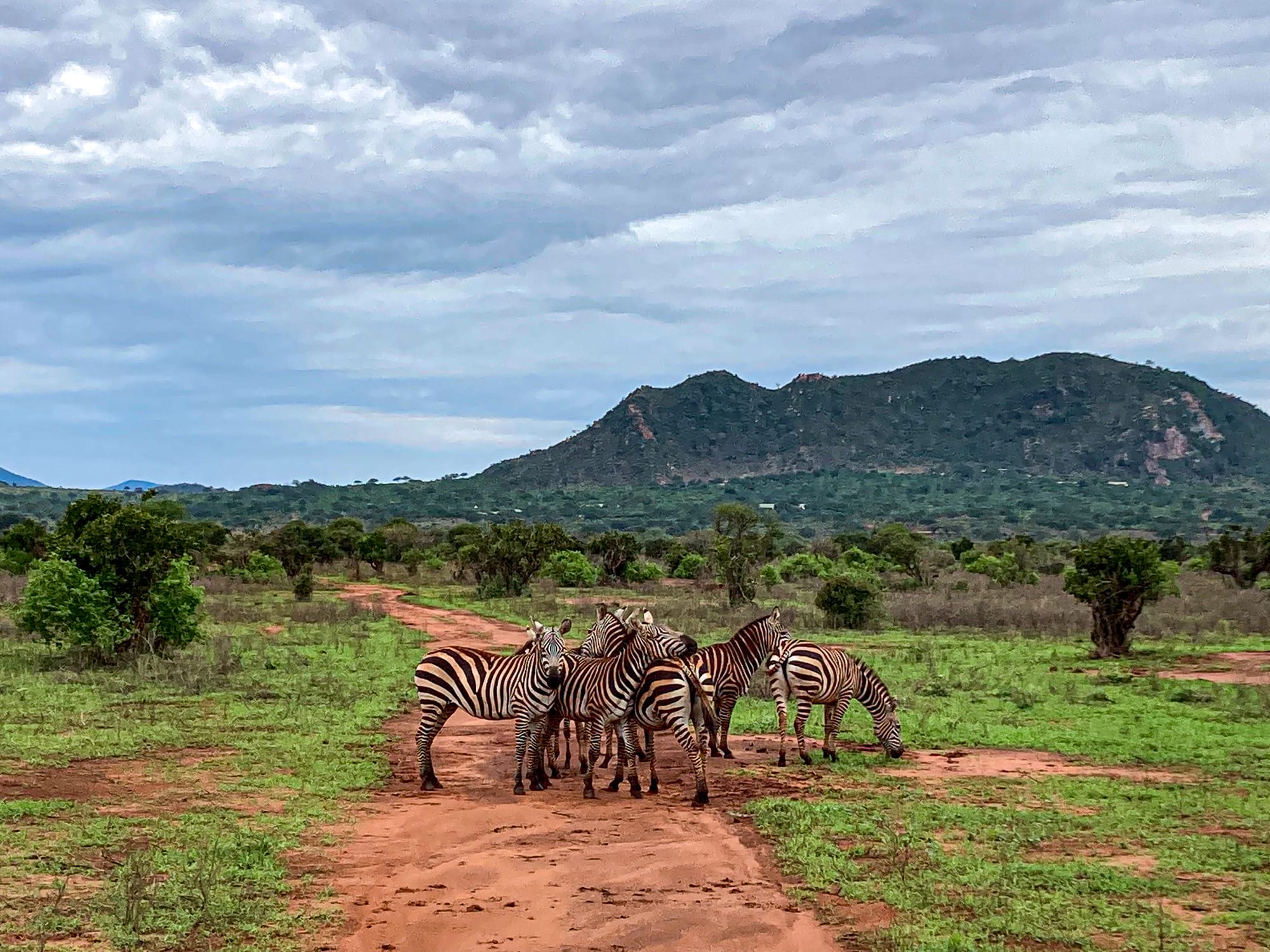
Elephants—Tsavo’s most iconic inhabitants—appeared in herds, their skin stained red from dust-bathing in the soil.
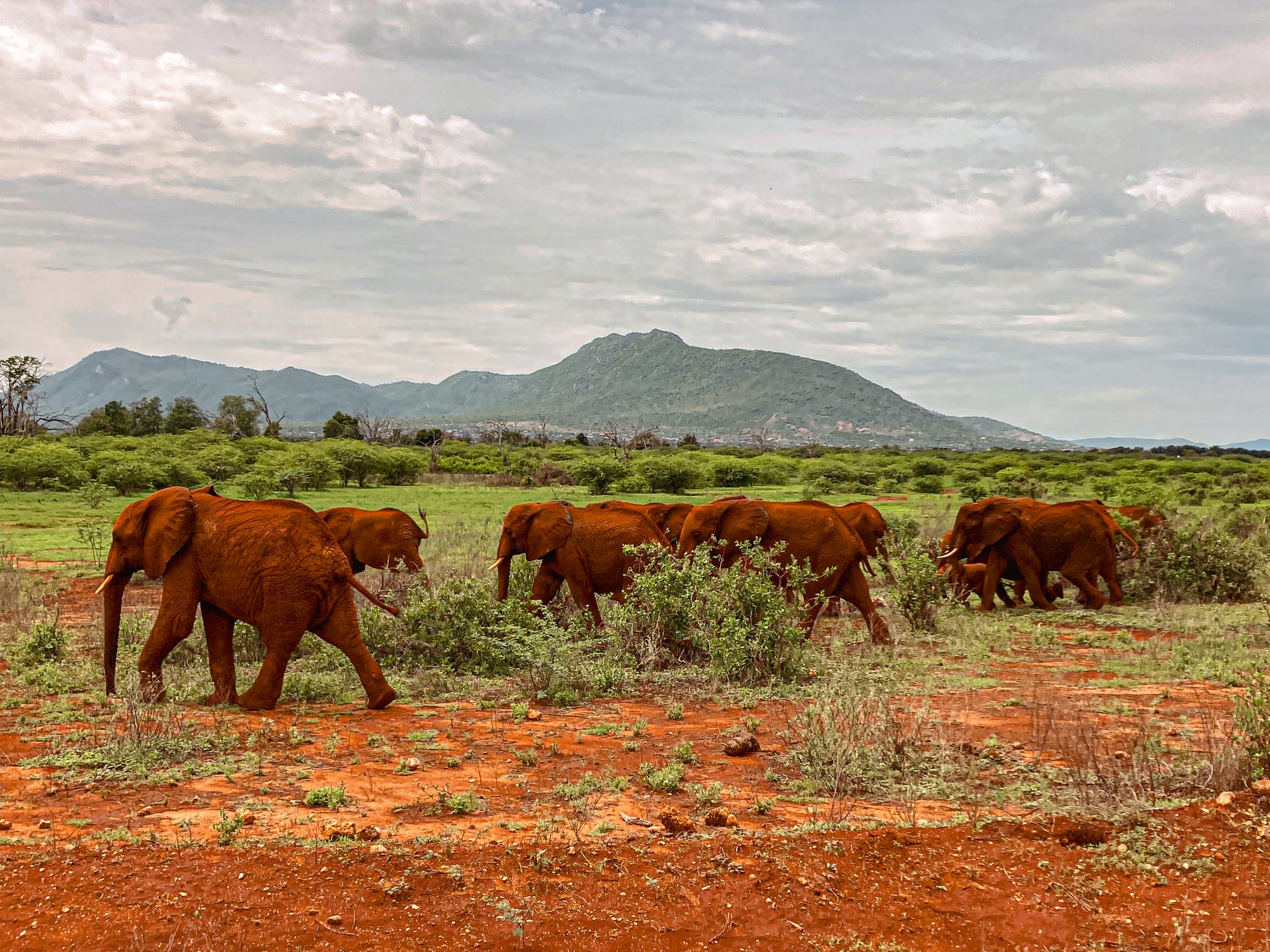
We also saw vervet monkeys darting through trees, antelope pausing alert in the grass, and countless birds, from tiny bright flashes to great raptors circling high above.
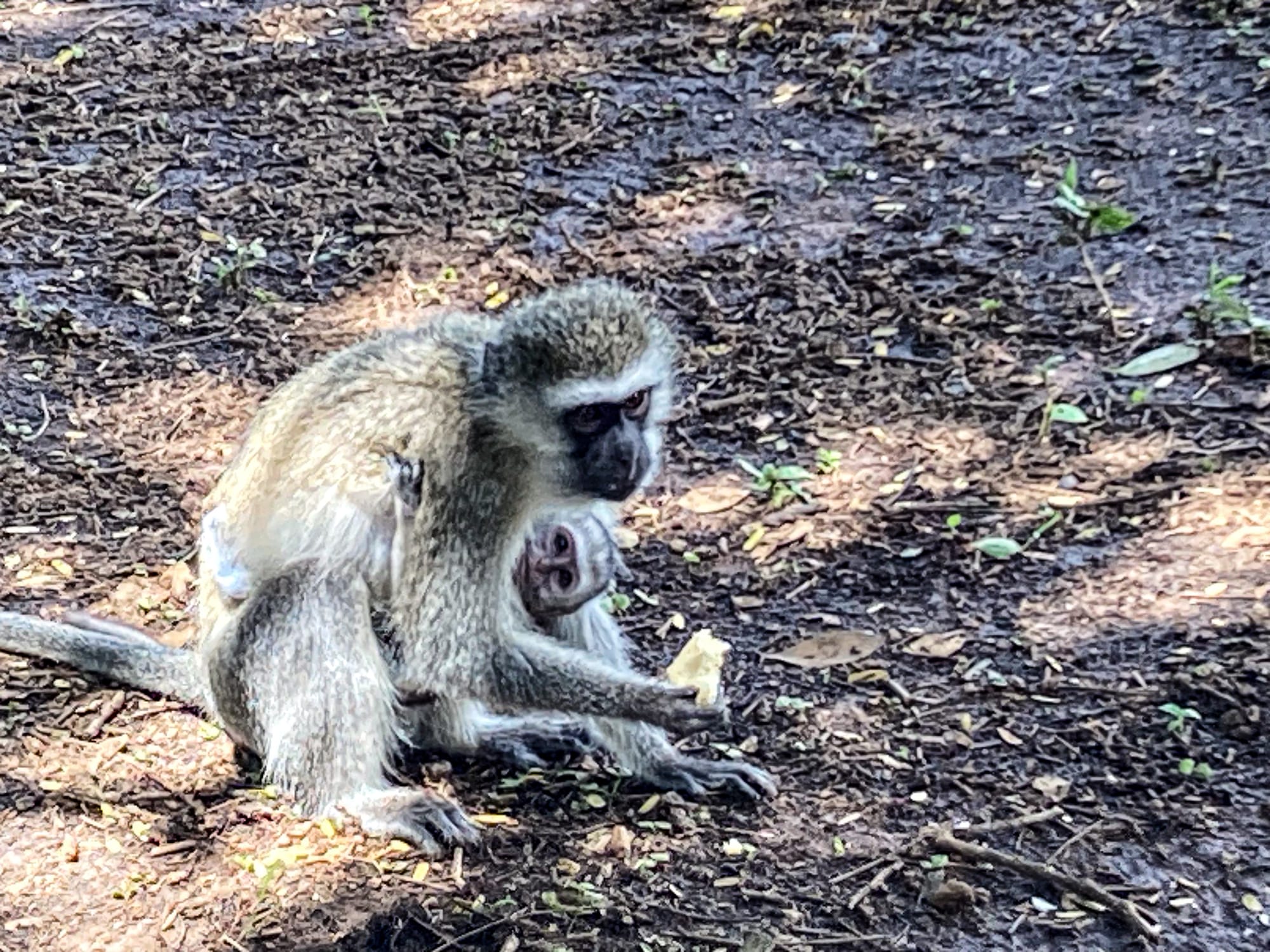
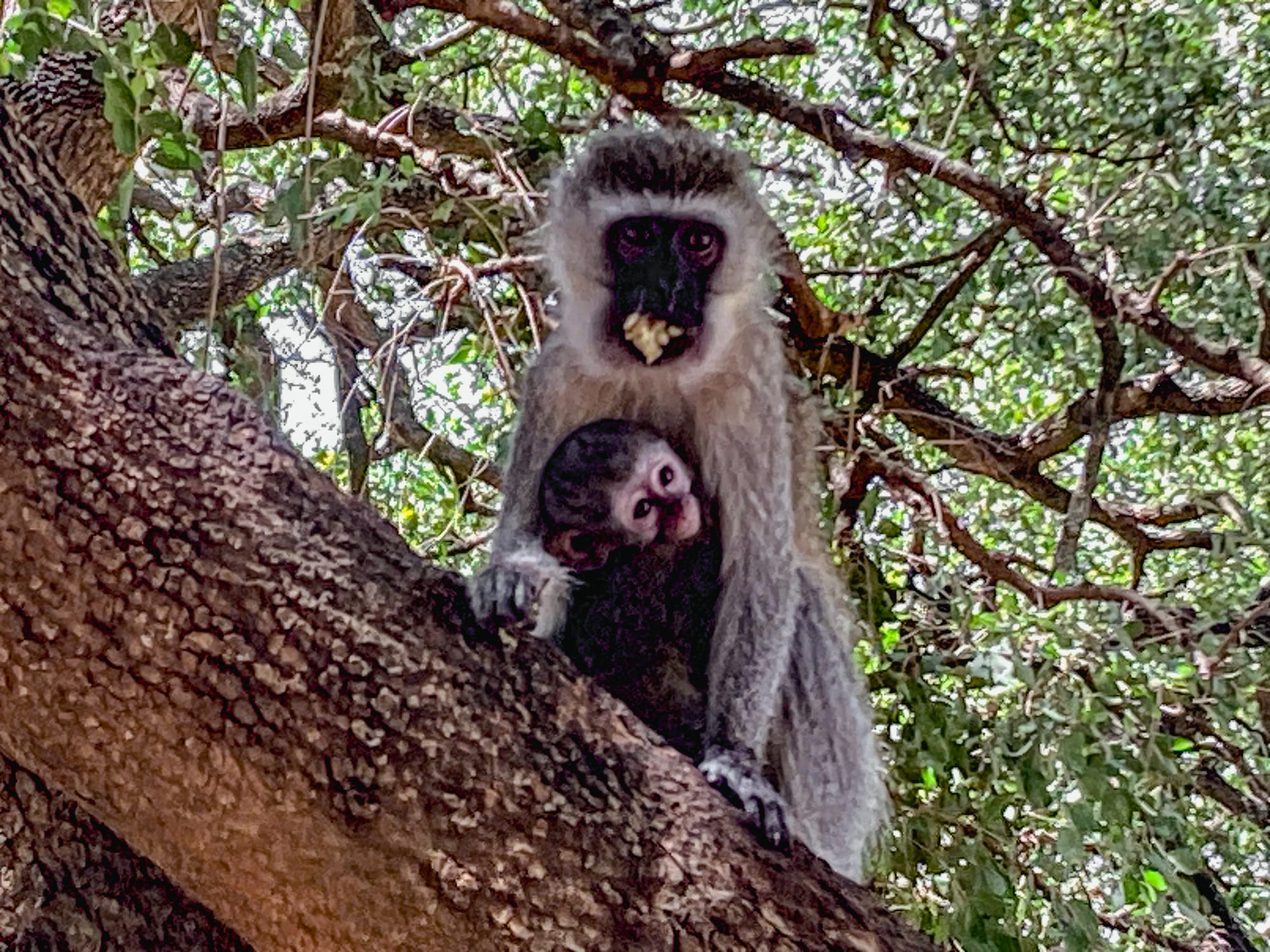
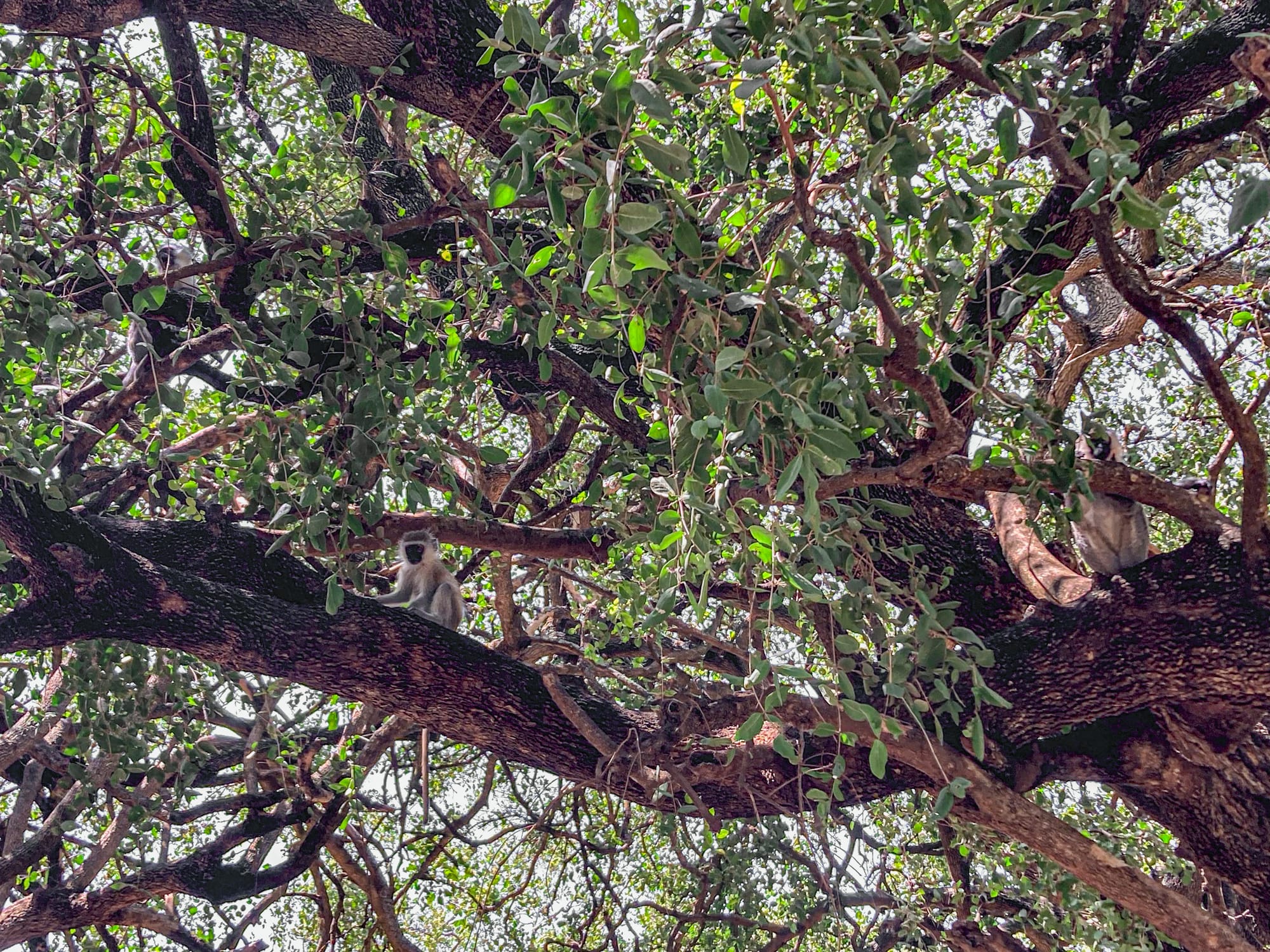
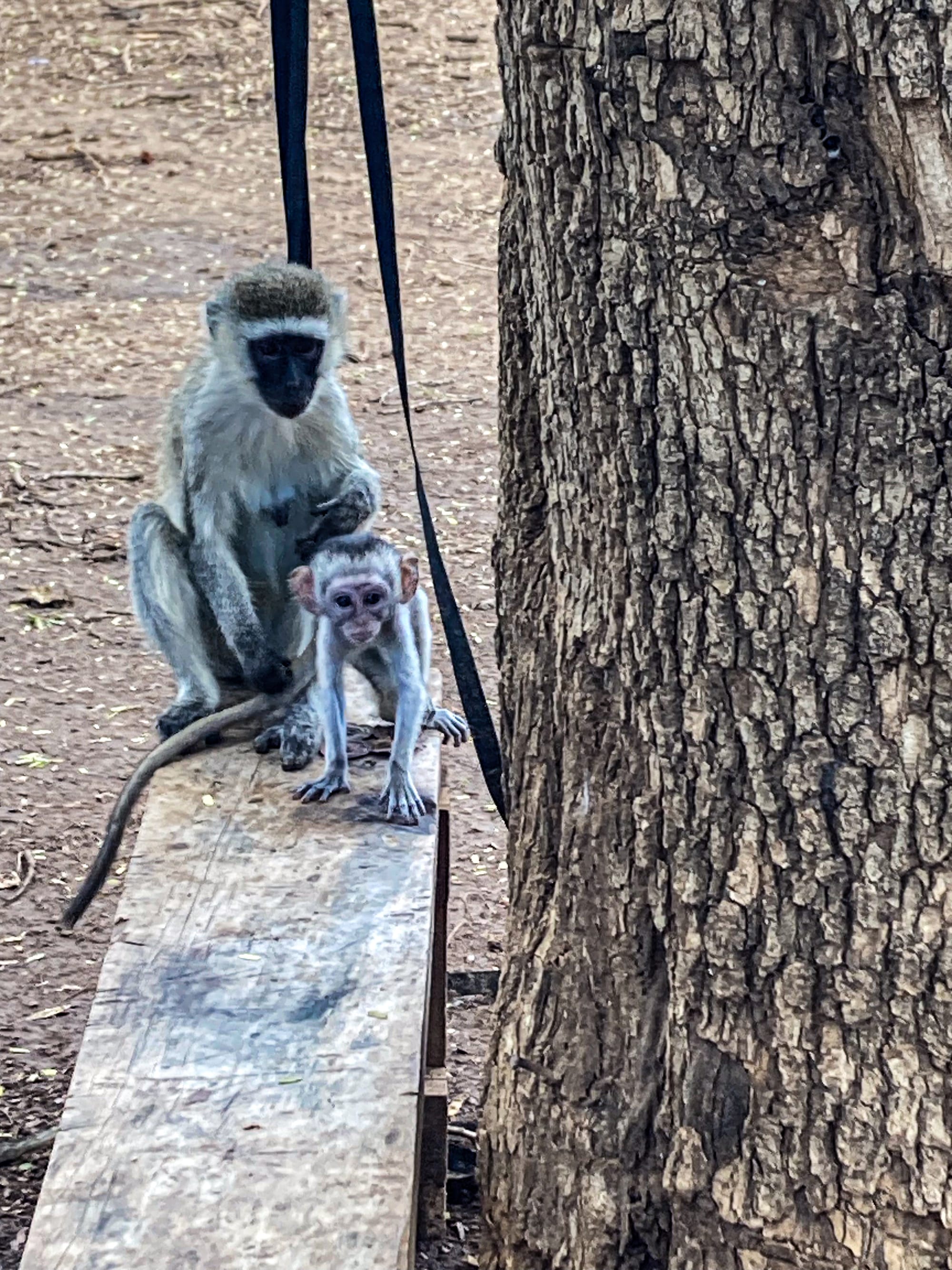
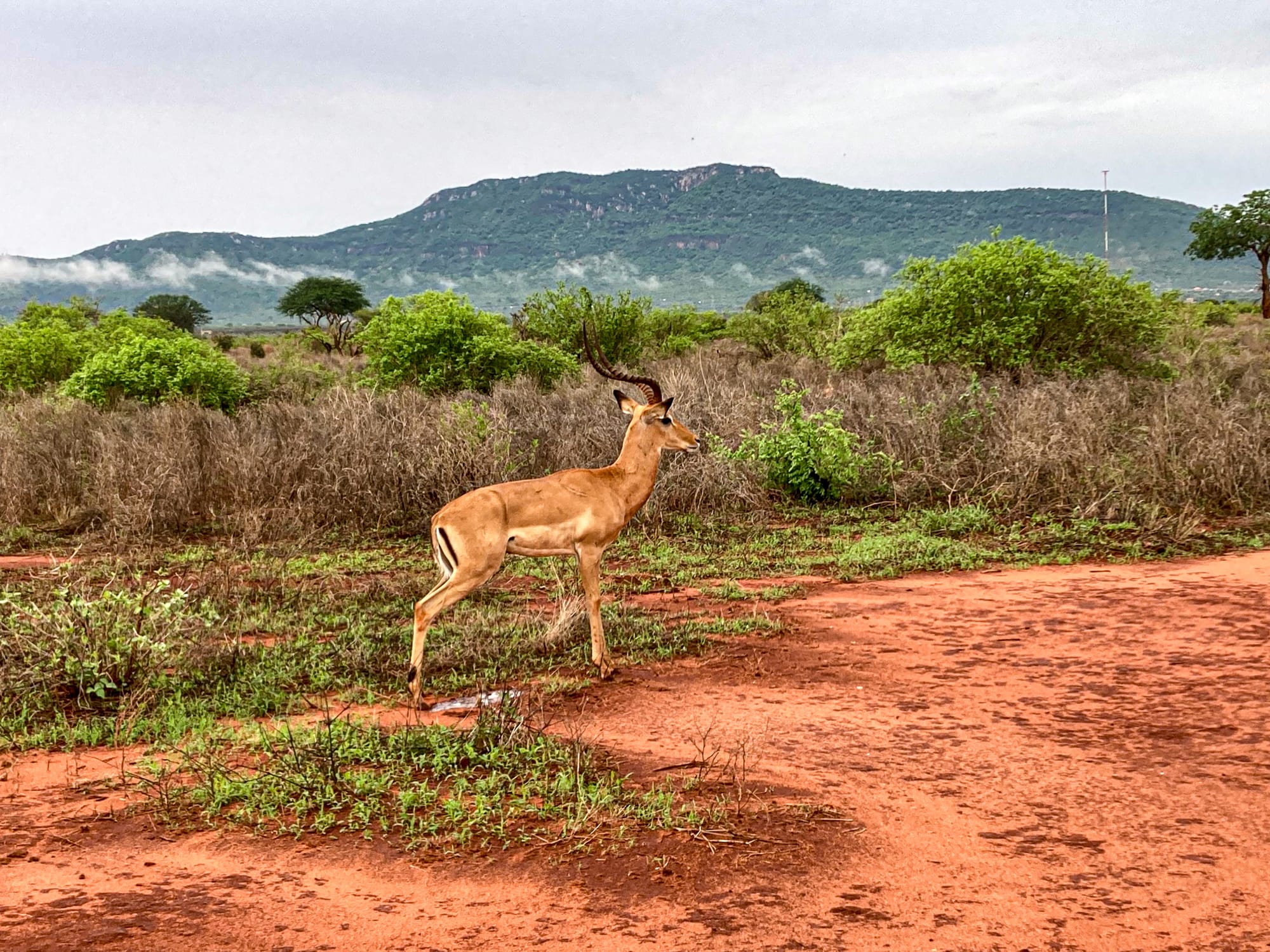
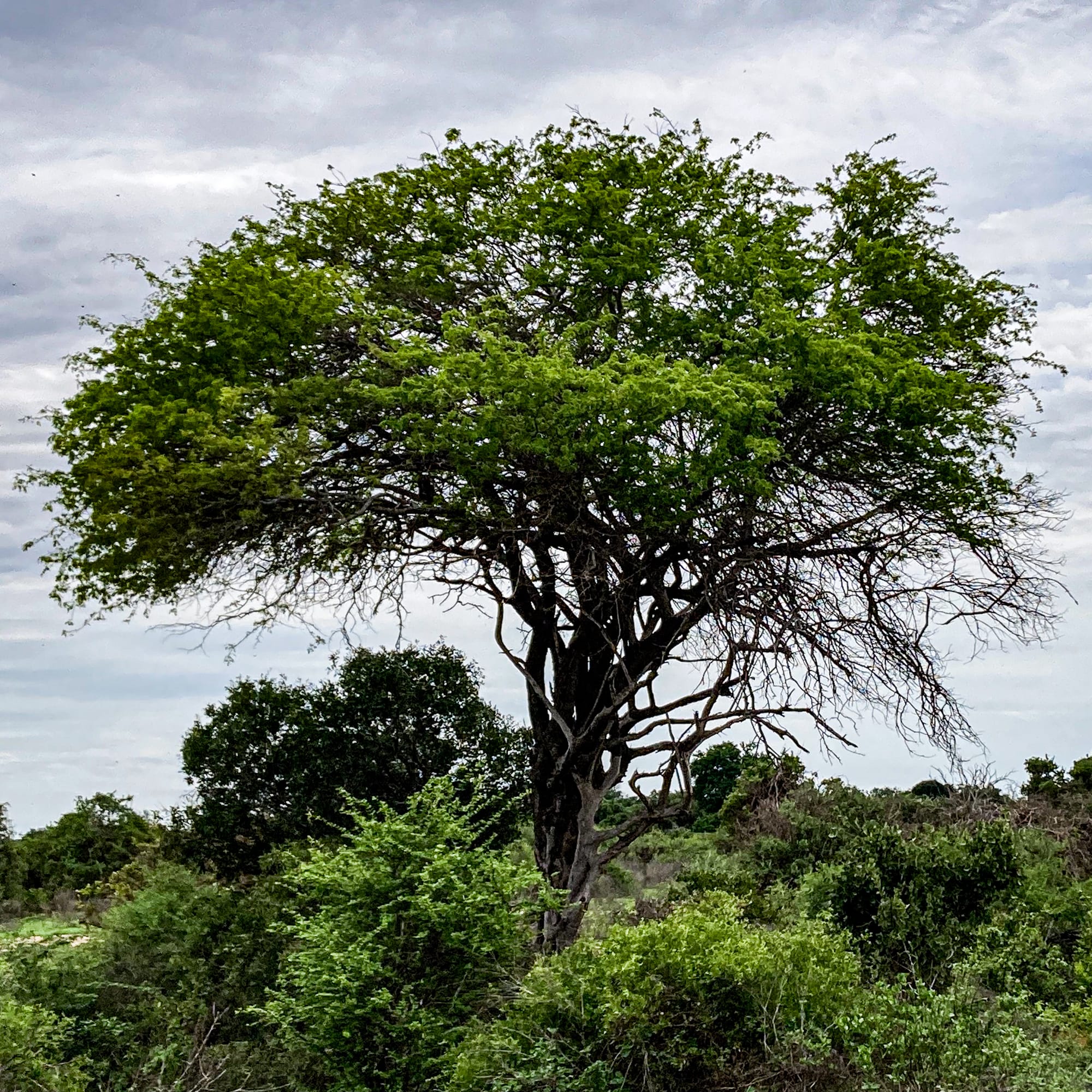
Wildlife and landscapes in Tsavo East
Each sighting brought a rush of excitement, no matter how many times we had already seen that species. To see them here, in their own space, was to be reminded of how extraordinary the everyday can be.
How the safaris work
Part of the magic of a safari is the network that supports it. Each jeep carries a radio, and guides share information with one another. When someone spots lions resting, or elephants moving, or a leopard hidden in the bush, the word goes out. Vehicles change course, sometimes speeding across the plains to reach the sighting in time. There is a collective energy to it, a sense of shared discovery. Everyone is searching, but everyone is also helping each other find.
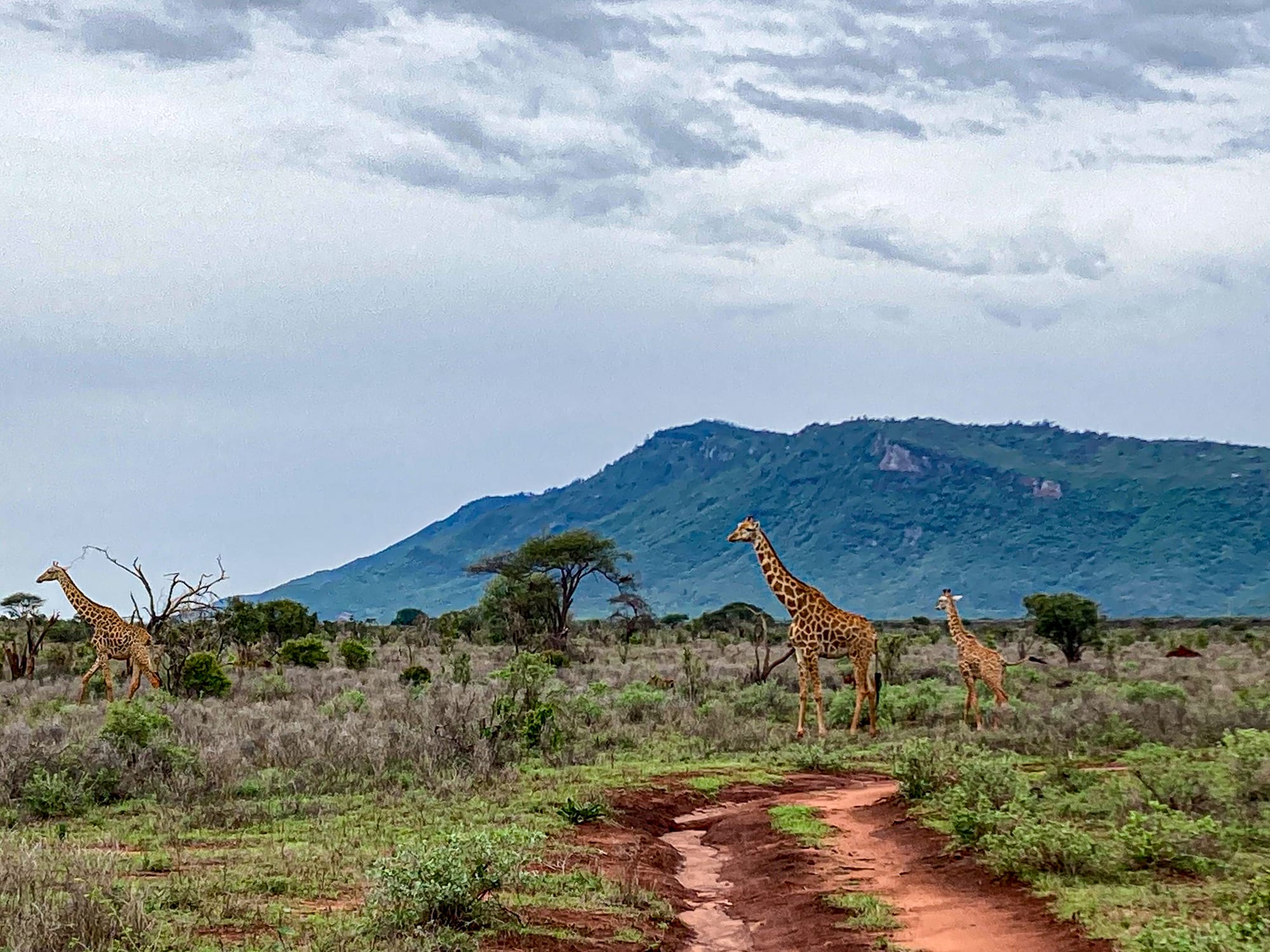
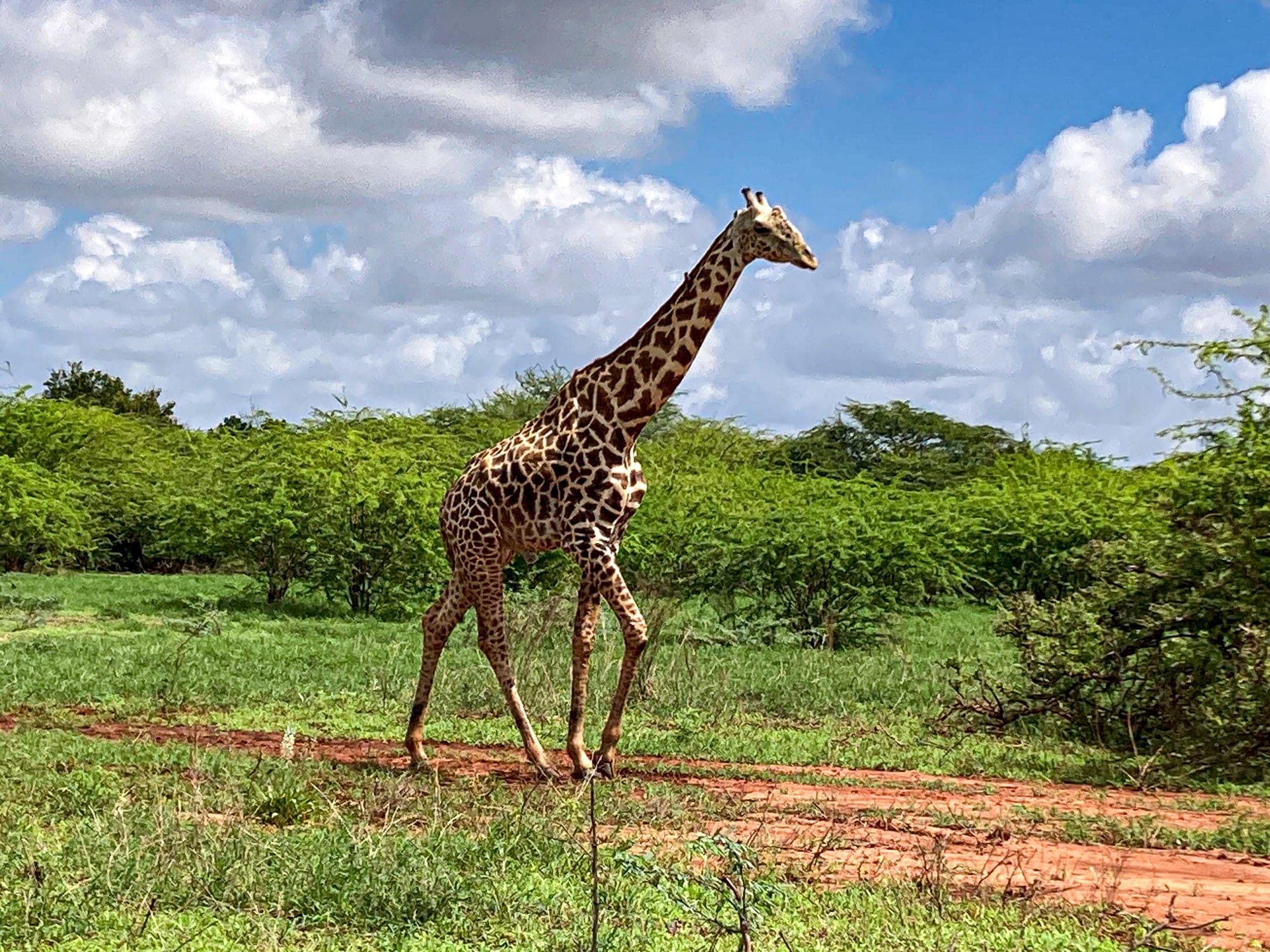
Giraffes on the move in Tsavo East
During the day, you return to a lodge for meals and rest. The lodge we stayed at, Voi Wildlife Lodge, had its own small lake, which meant animals sometimes came directly to the water’s edge.
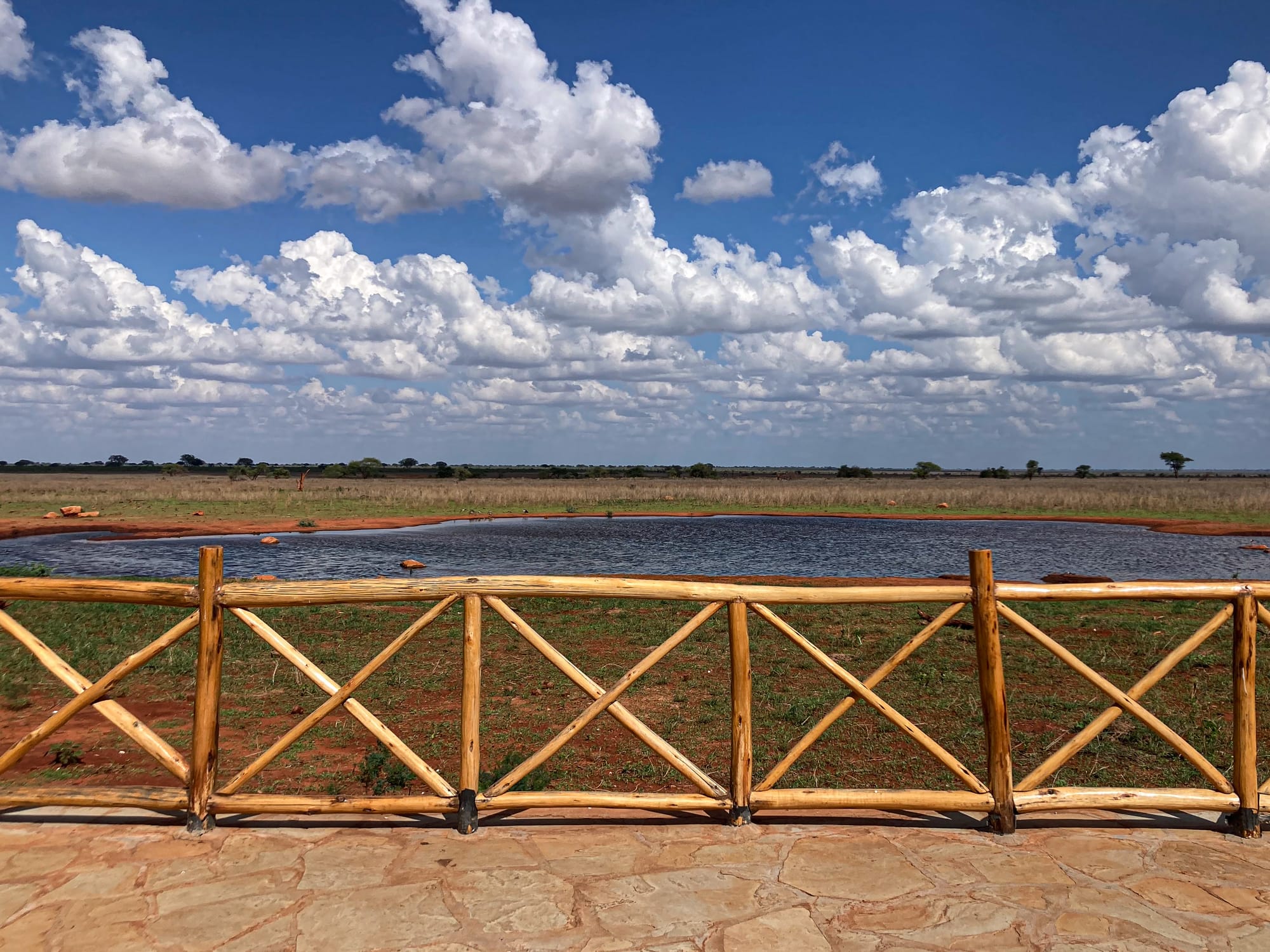
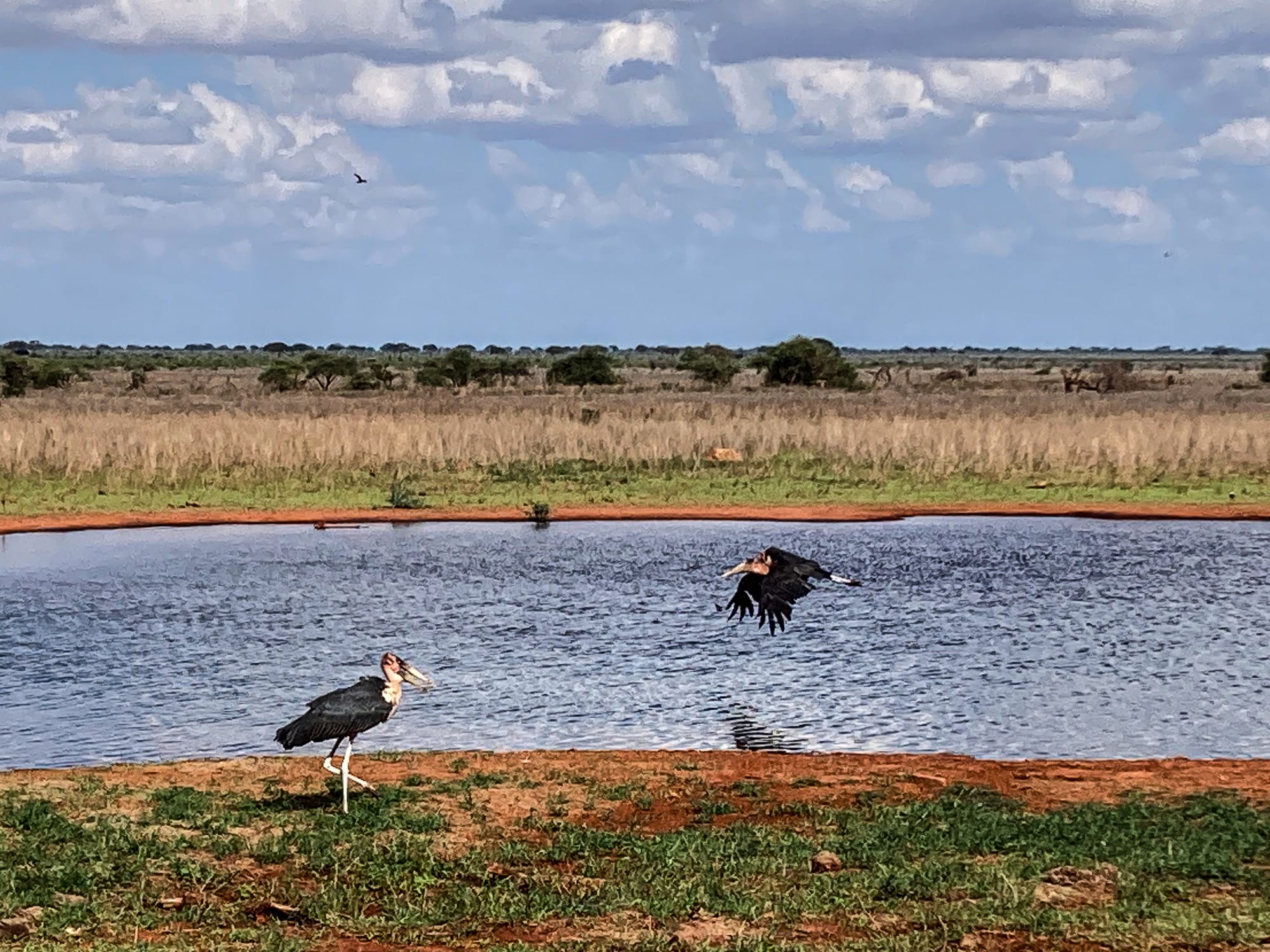
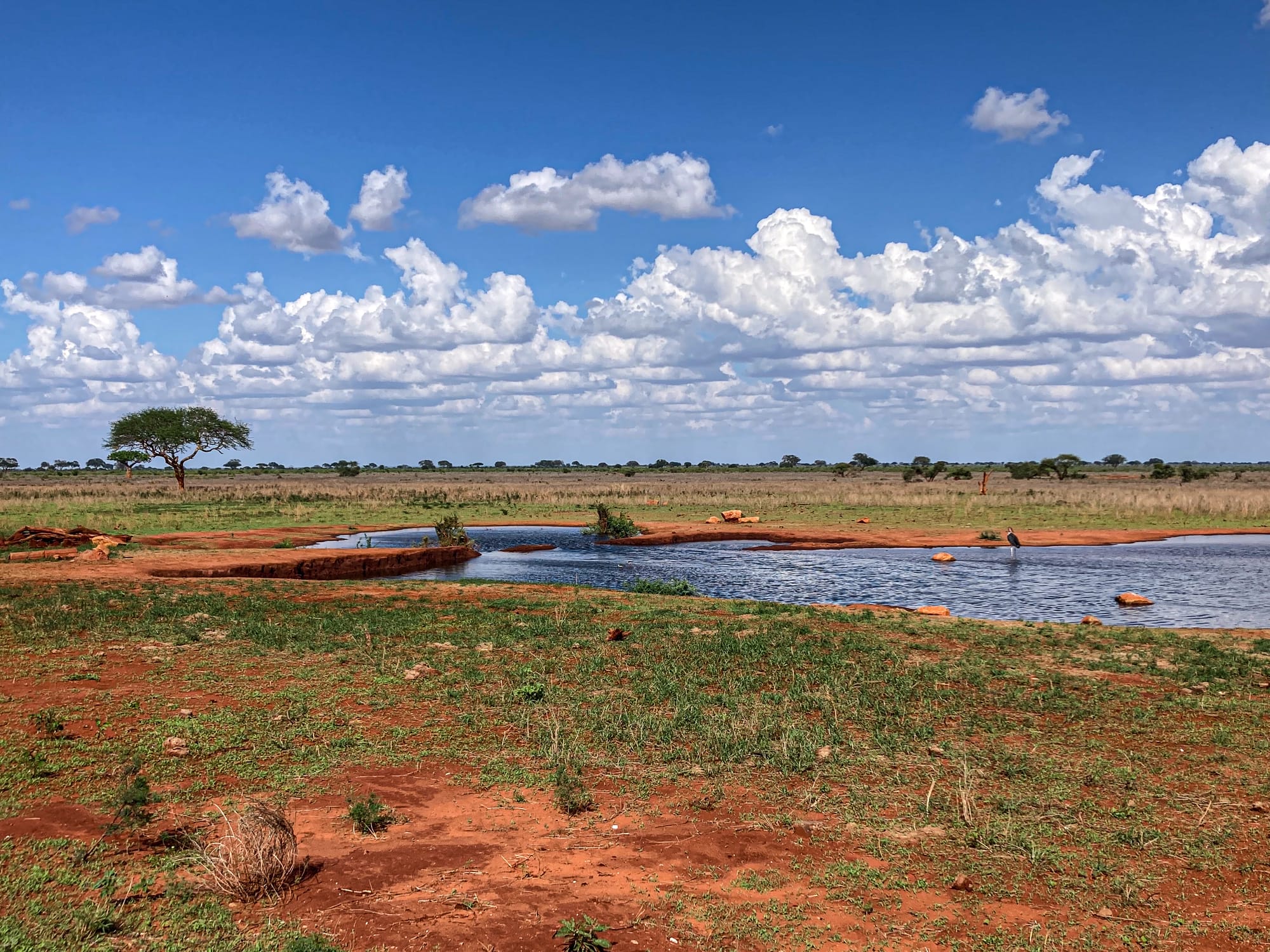
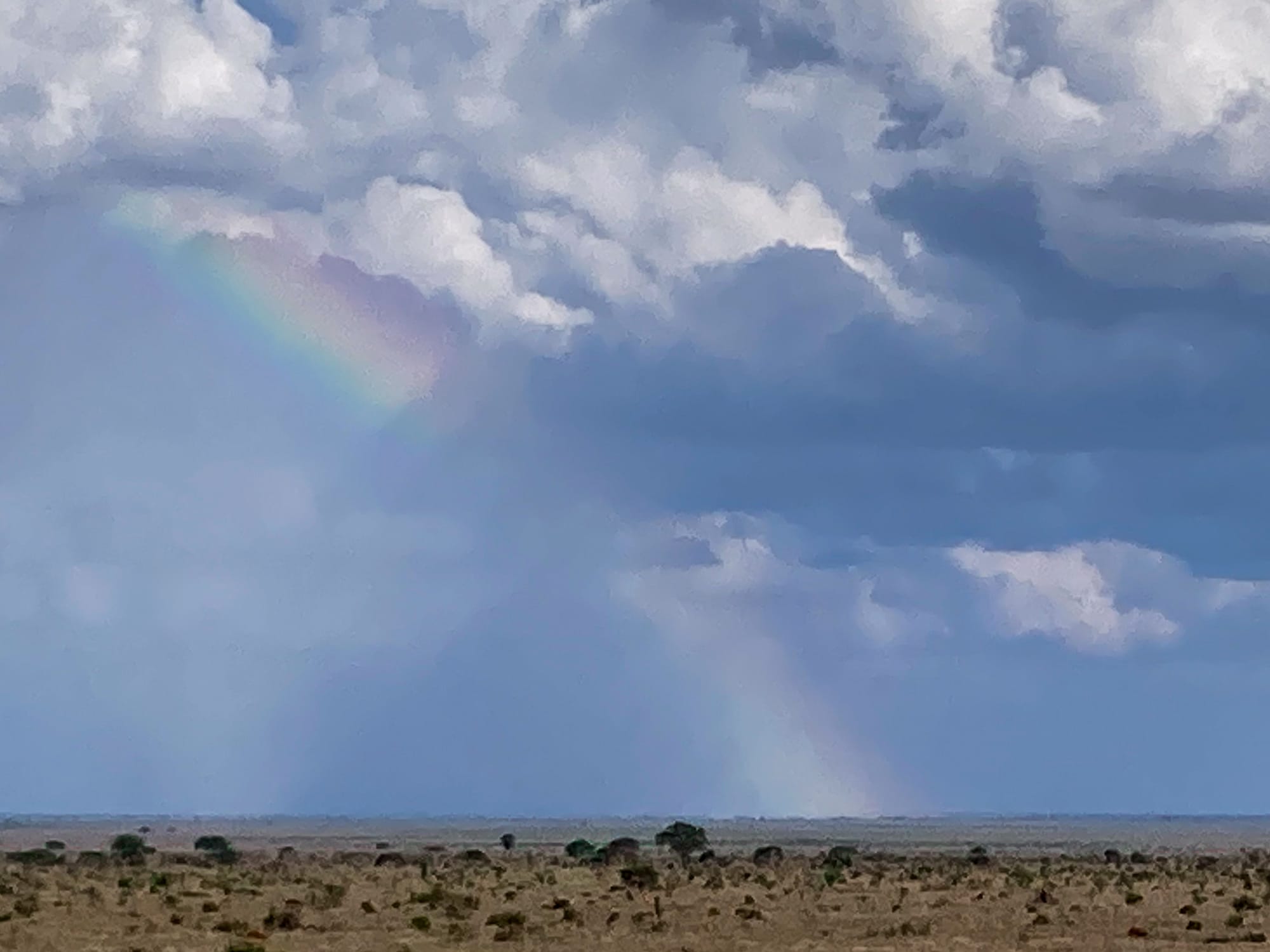
Scenes from Voi Wildlife Lodge
To sit on a porch and watch zebras or antelope approach was a reminder that in this landscape, the wild and the human overlap constantly.
Dinner at the lodge is a buffet, and there is usually enough to piece together a vegan plate.
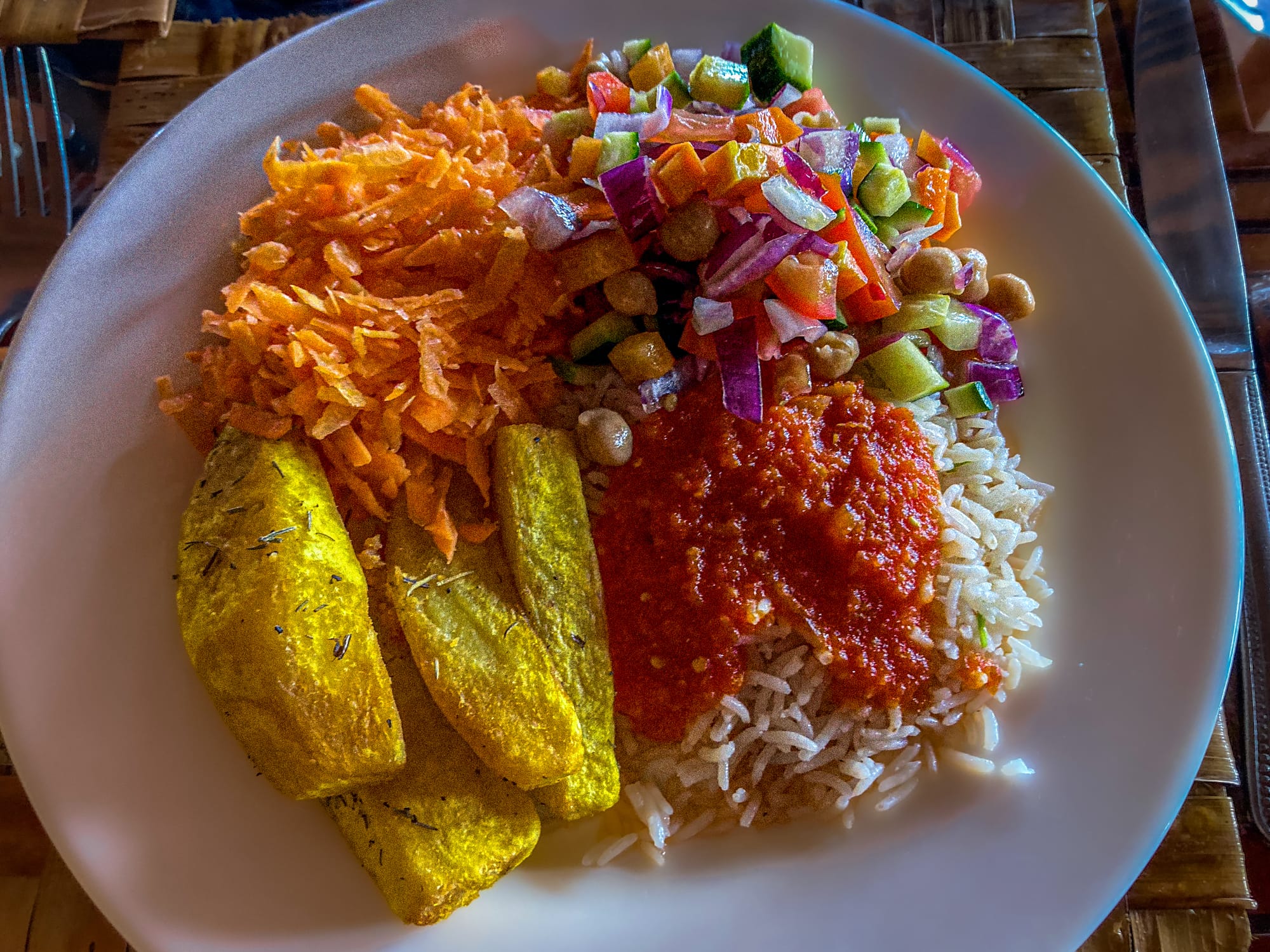
At night, there are options for night drives. A flashlight beams into the darkness, catching the eyes of animals otherwise invisible. The park feels utterly different in the dark—quieter, more intimate, more mysterious.
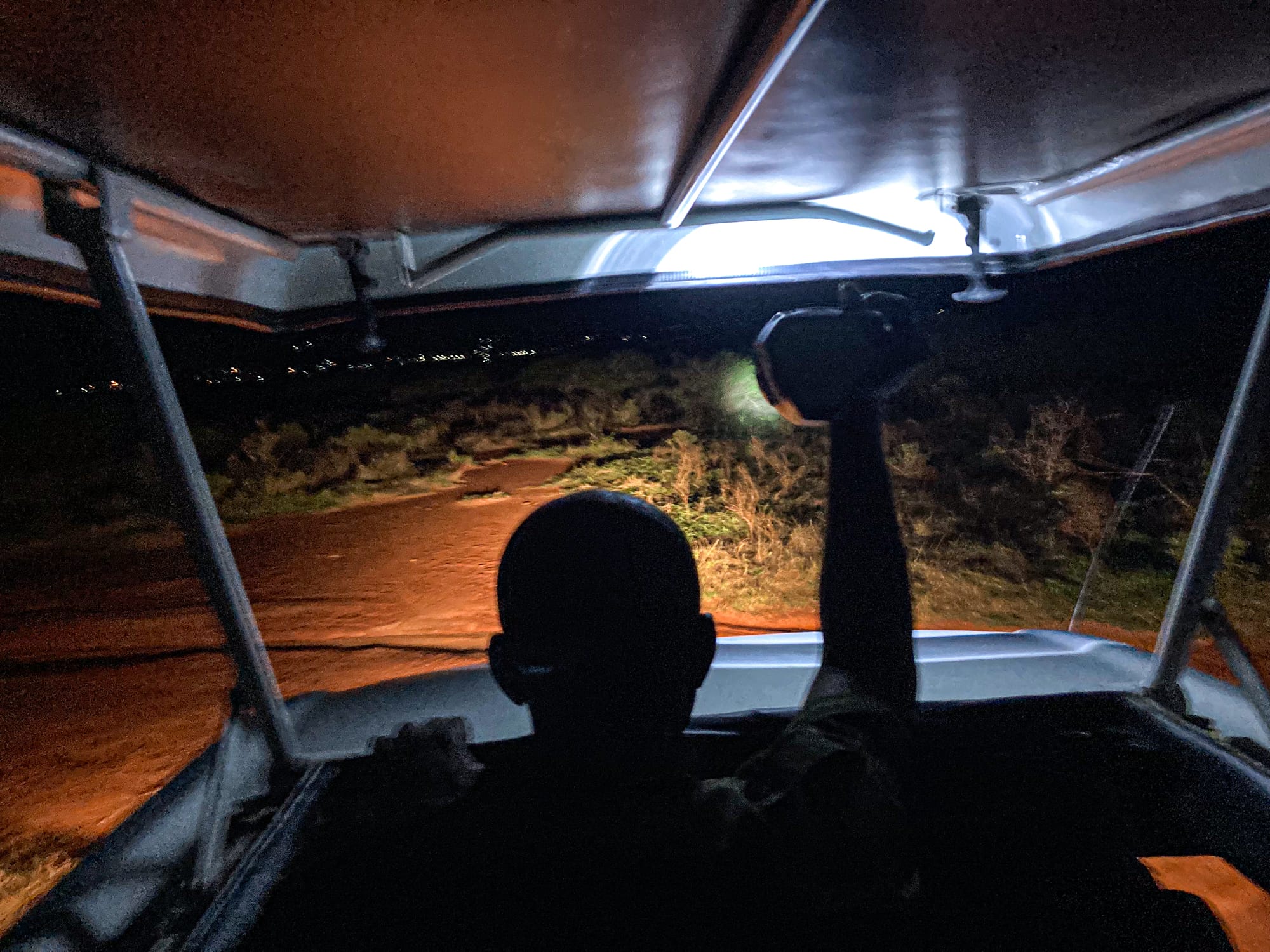
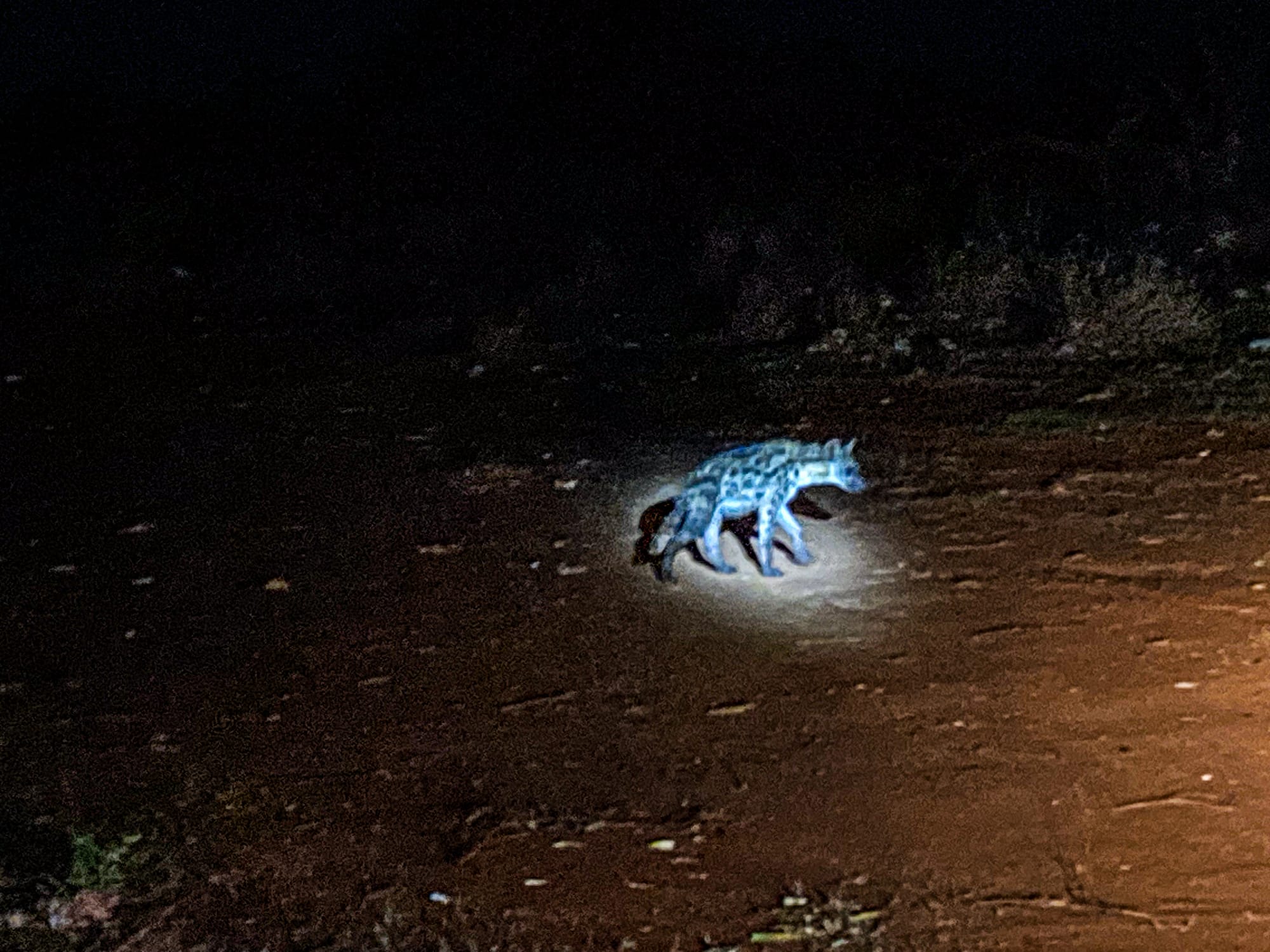
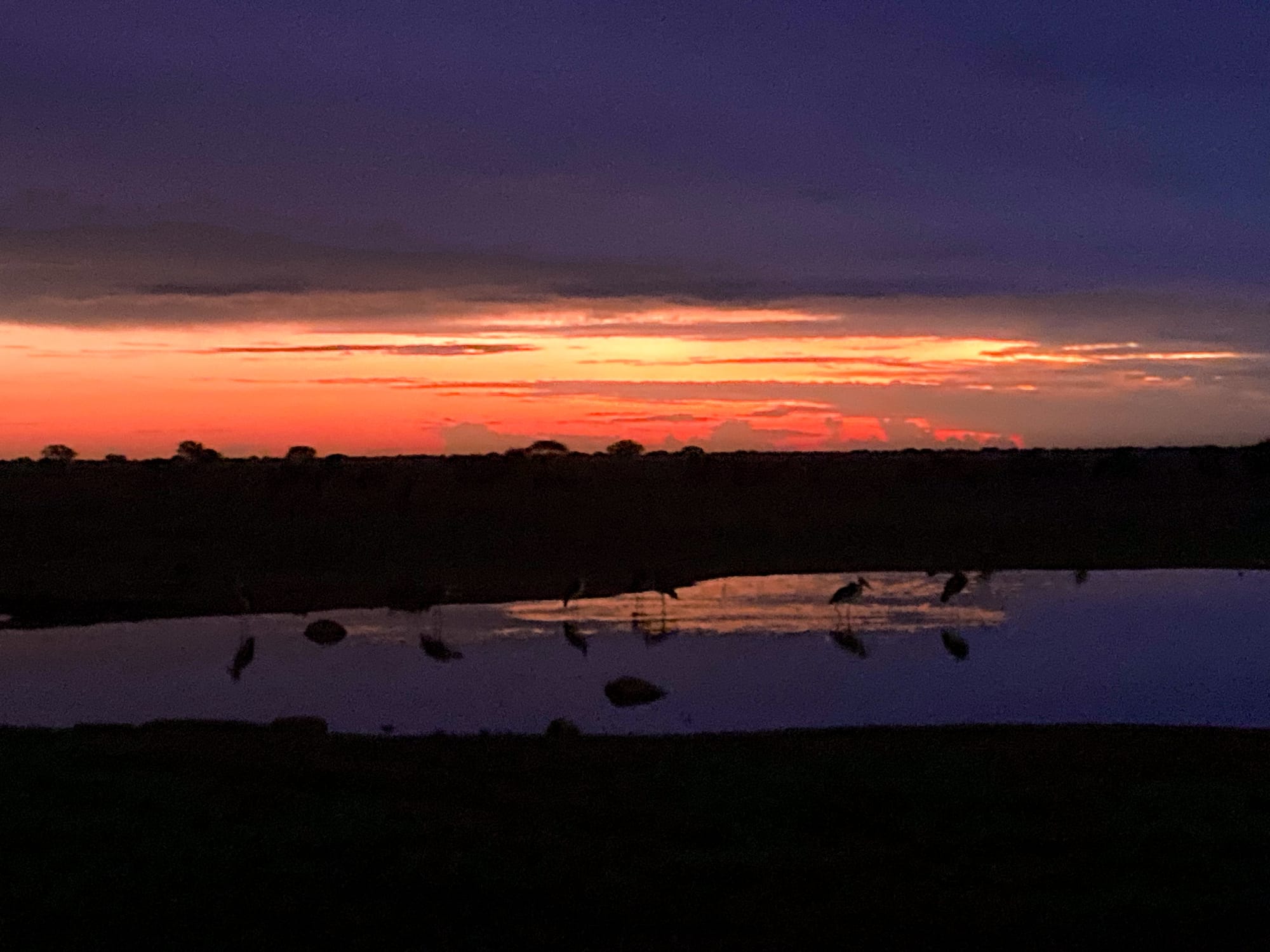
Hyenas may appear on the roadside, lions move under cover of night, and the sounds of the savanna take on new intensity.
Wildlife photography
We went to Kenya before buying our Fujifilm X-T5 and all of our photos here were actually shot on an iPhone SE (2nd generation). We do regret not having had a proper camera for the safari.
Our biggest recommendation would be to have a solid zoom lens, as many of the animals will be quite far away from your vehicle. We recommend the XF50-140mmF2.8 R LM OIS WR for the Fujifilm X-T5.
The feeling of being there
What lingers most about Tsavo East is not just the animals, but the feeling of being there. The slowness of the drives, the endless horizons, the sense that your only purpose is to watch and wait. In a world that is often full of noise and deadlines, a safari is a rare chance to shift into another rhythm—one guided entirely by the land and its inhabitants.
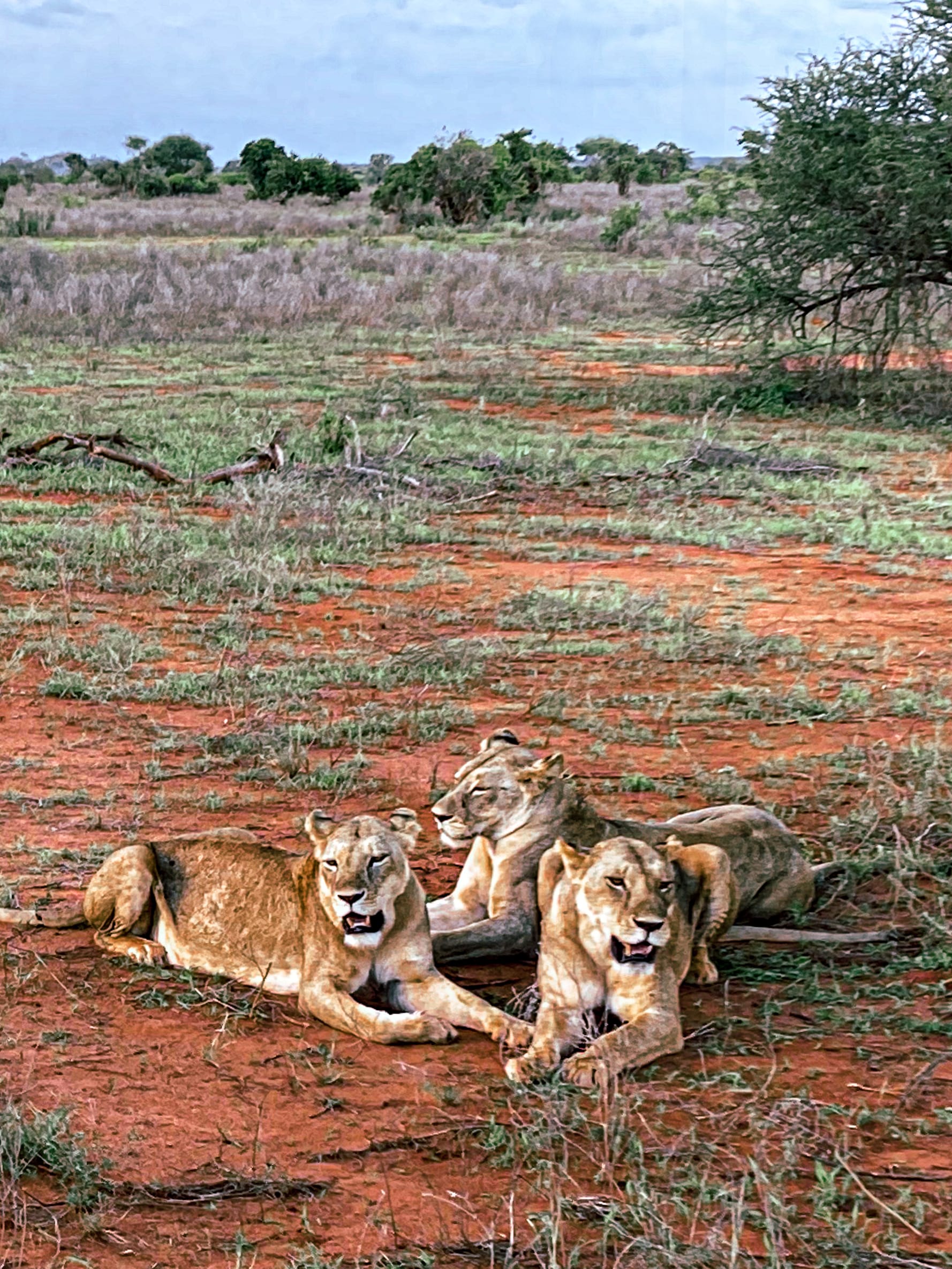
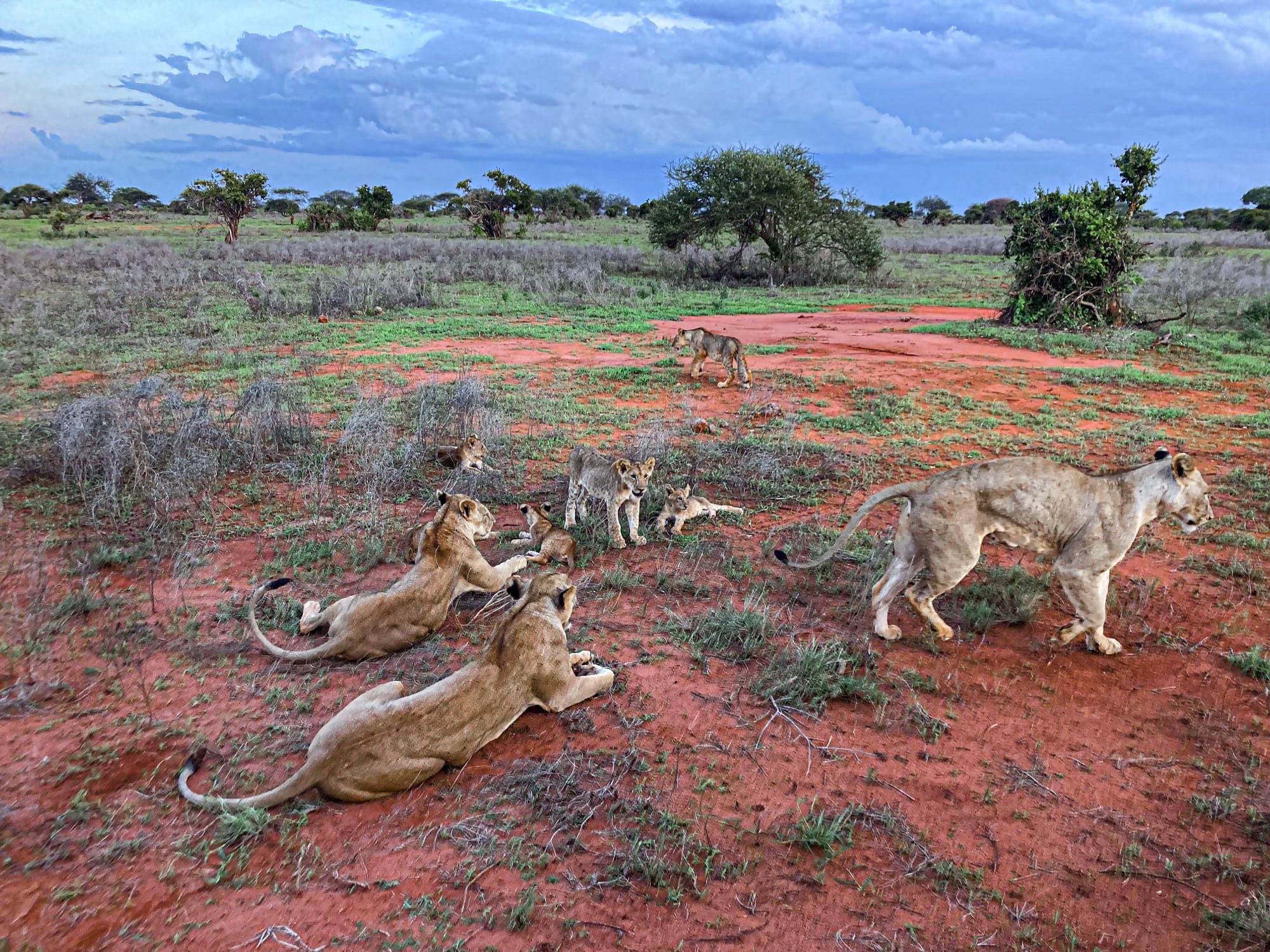
Lions lounging together on the warm red earth
There is peace in it, but also exhilaration. The peace of driving for hours, scanning for signs of life. The exhilaration of suddenly spotting movement and realizing it is a lion, or an elephant, or a herd of giraffes. The stillness of watching animals unbothered by your presence, and the rush of racing across dirt roads to catch sight of something before it disappears.
What makes Tsavo East unique
Kenya is full of national parks and reserves, each with its own character. Tsavo East stands out for its sheer size, its dramatic landscapes, and its concentration of wildlife. It is also more accessible than some, reachable within a day’s journey from Diani Beach. For anyone staying on the coast, it offers the possibility of pairing time at the ocean with time in the savanna, a juxtaposition that makes Kenya unique.
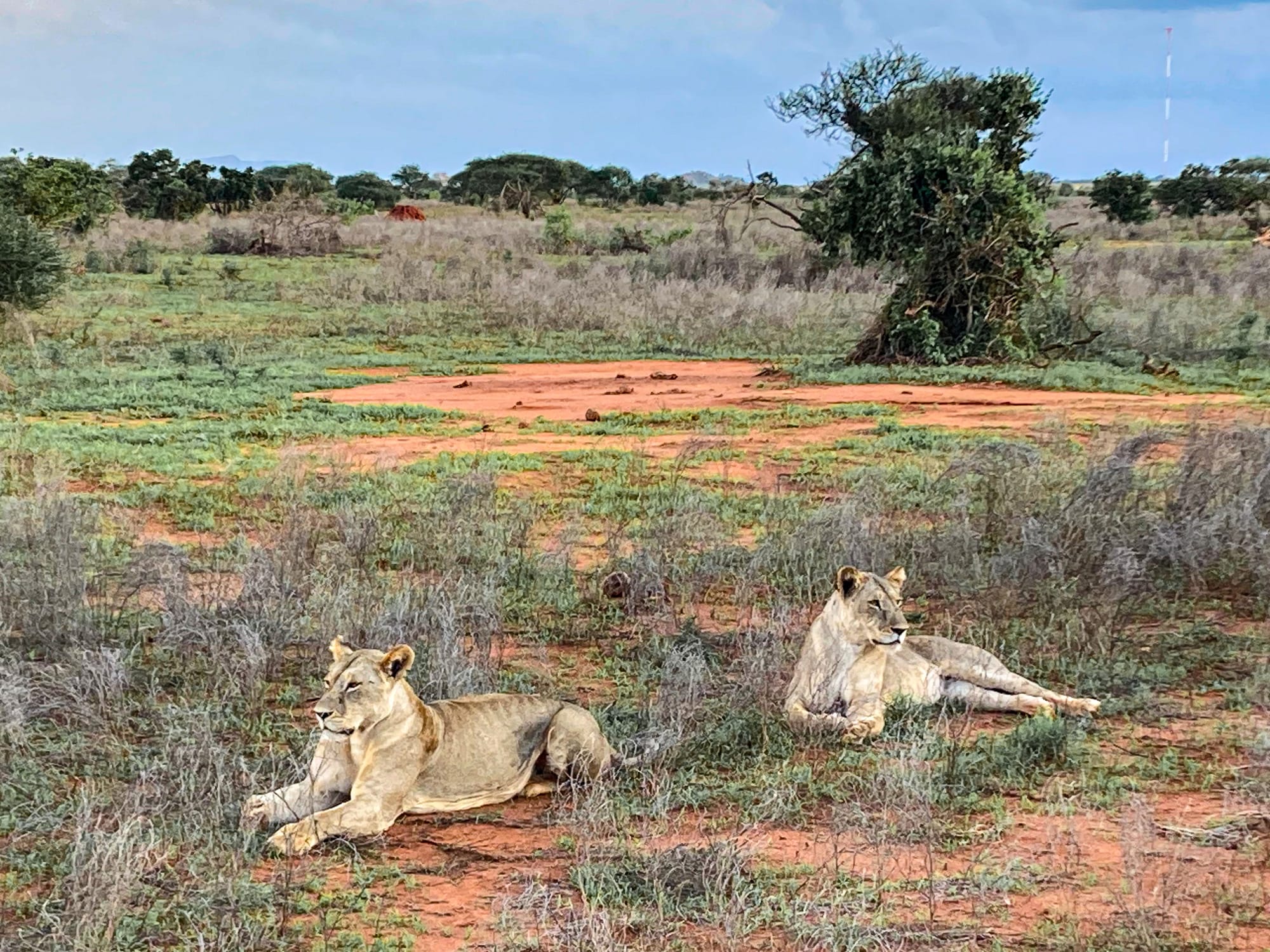
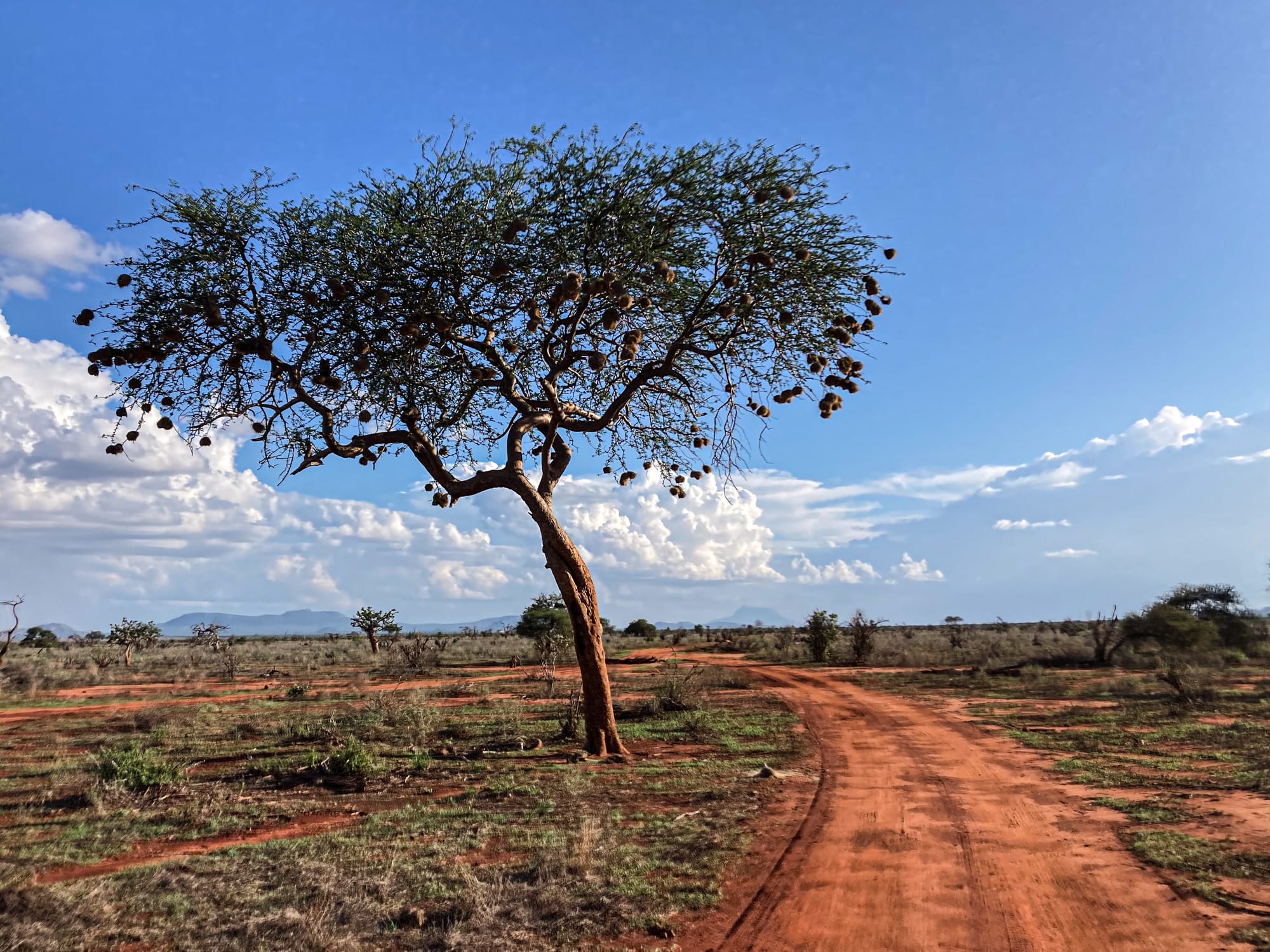
Lionesses resting on the red earth savanna and a lone acacia tree dotted with weaver bird nests
A safari here is a way of seeing Kenya not from the outside, but from within its living systems.
For us, our safari experience was highlight of Kenya: the red earth, the wide skies, the sense of being small in a vast and beautiful world. We think it's an essential part of understanding what this country is.






